The Road to Bosworth: Following In The Footsteps Of Richard III
Note: This is a show notes page accompanying my on-location podcast in Leicester, recorded in the summer of 2024.
An Introduction To The Battle Of Bosworth
The Battle of Bosworth, fought on 22 August 1485, is a pivotal moment in English history. It marked the dramatic conclusion of the Wars of the Roses and the dawn of the Tudor dynasty. This decisive clash between the forces of the Yorkist King Richard III and the Lancastrian contender Henry Tudor unfolded in the fields of Leicestershire.
King Richard III, whose brief and tumultuous reign had been plagued by controversy and rebellion, faced a determined challenger in Henry, who sought to unite a fractured realm under a new banner. The outcome of this battle not only ended Richard’s life and reign but signalled the end of Plantagenet rule, ushering in a new era of governance under the Tudors, beginning with Henry VII.
The Battle of Bosworth is remembered for its strategic manoeuvres, the betrayal of key nobles, and its lasting impact on the English throne. In three podcast episodes recorded to commemorate The Battle, we follow Richard III’s steps as he prepares for the battle in Leicester, travels to meet Henry Tudor at Bosworth Battlefield, and finally, the aftermath of the battle, where Richard’s body is brought back to Greyfriars for burial.
Joined by three experts and guides, we recreate the 48 hours that changed English history forever.
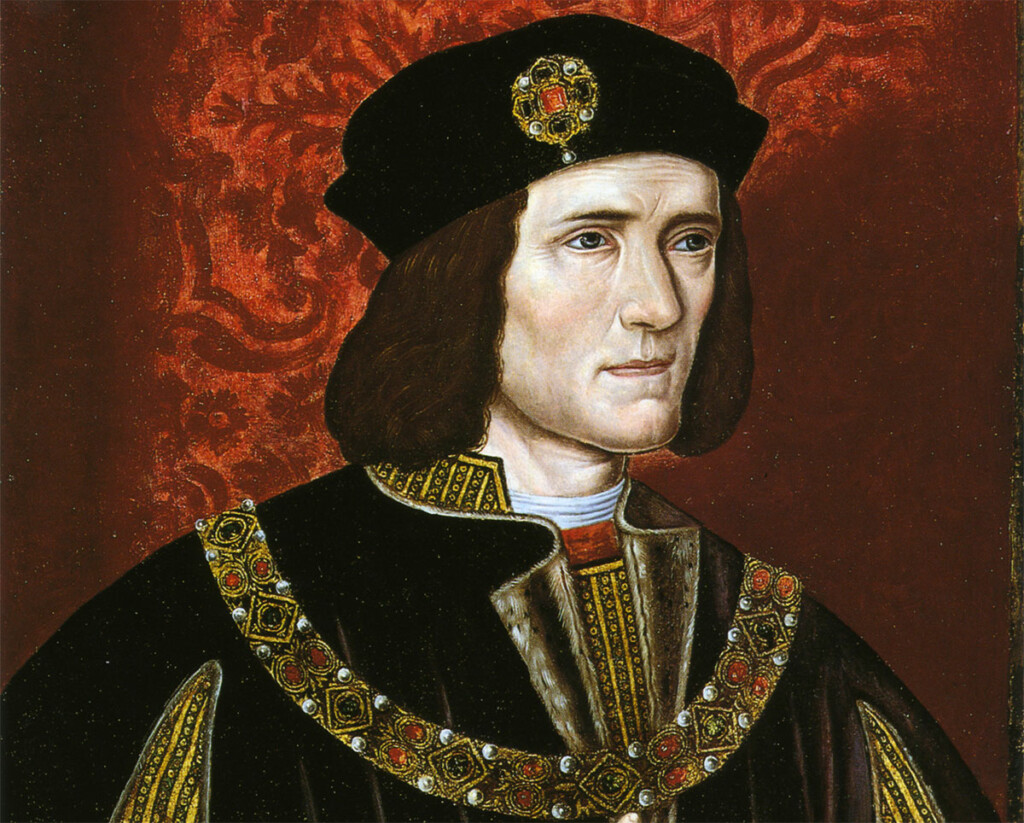
King Richard III
Each episode is recorded ‘on-location’ in Leicester and at the battlefield site. In Episode 1 we visit Leicester and recreate the medieval city as we visit some of the sites associated with Richard prior to the battle. In Episode 2 we visit the site of the battle to delve into the events that unfolded there and the key figures involved. In Episode 3 we explore the aftermath of the battle and follow in the footsteps of Henry Tudor as he brings the body of Richard III back to Leicester, visiting both the initial site of his burial and reinternment in Leicester Cathedral.
The links to the podcast episodes are below:
The Road To Bosworth Part 1: The City of Leicester
In August 1485, King Richard II was killed at the Battle of Bosworth. Some 500 years later, Leicester City Council, the University of Leicester and the Richard III Society began the archaeological dig for the ‘Looking for Richard’ project. Excavating a car park in Leicester, the team discovered the remains of Richard III. Right next to the spot where he was found, the King Richard III Visitor Centre was built. Our tour starts here, and we’re joined by Steve Bruce as we visit some of the main sites associated with Richard’s time in the city.
Blue Boar Inn
On the eve of the Battle of Bosworth Field, Richard III is believed to have stayed at the Blue Boar Inn. It was demolished in the nineteenth century. We visit the site of the inn close to the original heart of the medieval town.
Bow Bridge
According to local legend, as Richard III rode out of Leicester on his way to the Battle of Bosworth in 1485, he crossed Bow Bridge. The original Bow Bridge was a stone structure dating back to medieval times. An important crossing point over the River Soar, it connected Leicester with the western approaches to the town.
The original Bow Bridge was demolished in the nineteenth century, and a new one was constructed to replace it—it still stands today. A plaque on the bridge commemorates its association with Richard III.
Part 1: The Road To Bosworth Image Gallery
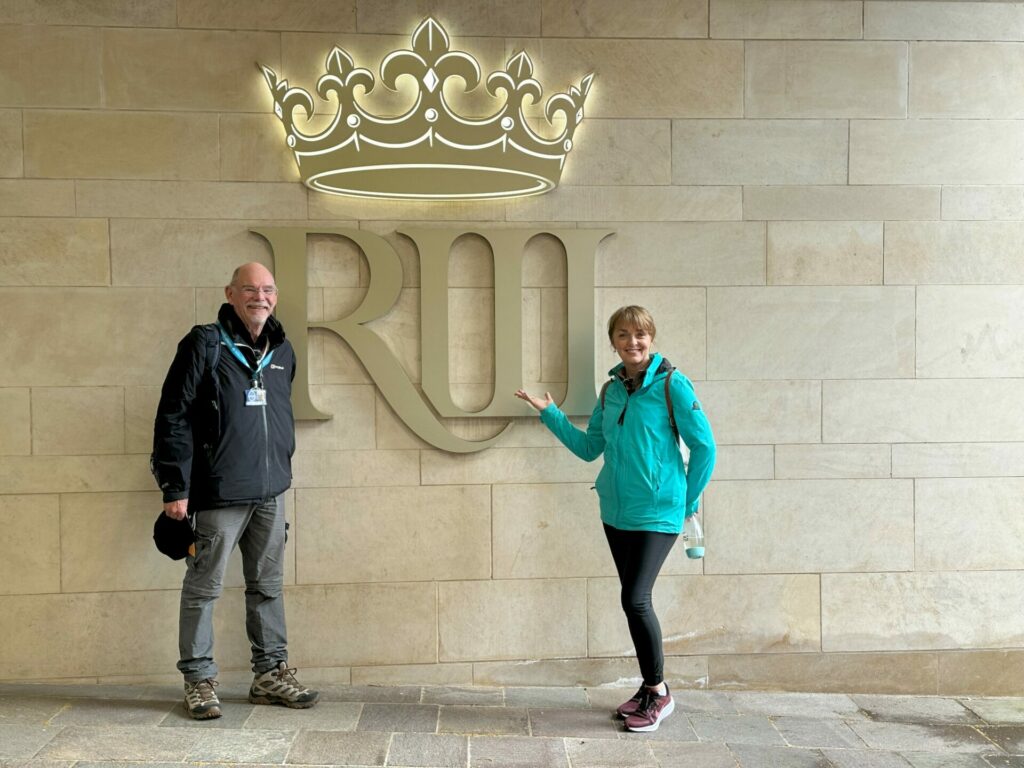
Sarah and Steve in Leicester, outside the KRIII Visitor Centre. Image © The Tudor Travel Guide.
The High Cross – The centre of Leicester’s medieval town. Images © The Tudor Travel Guide.
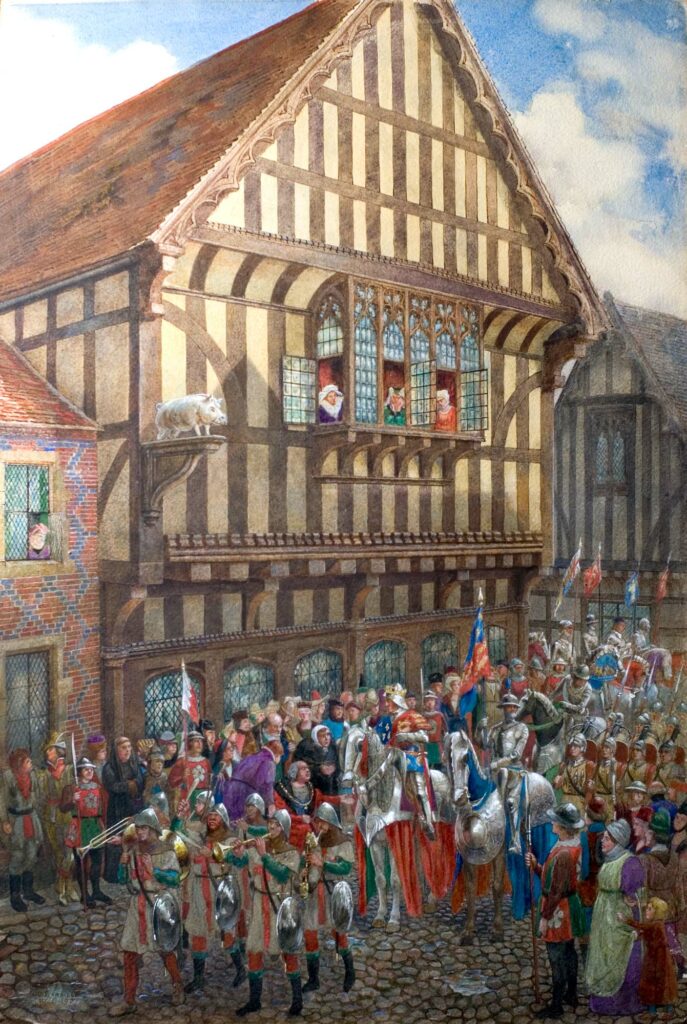
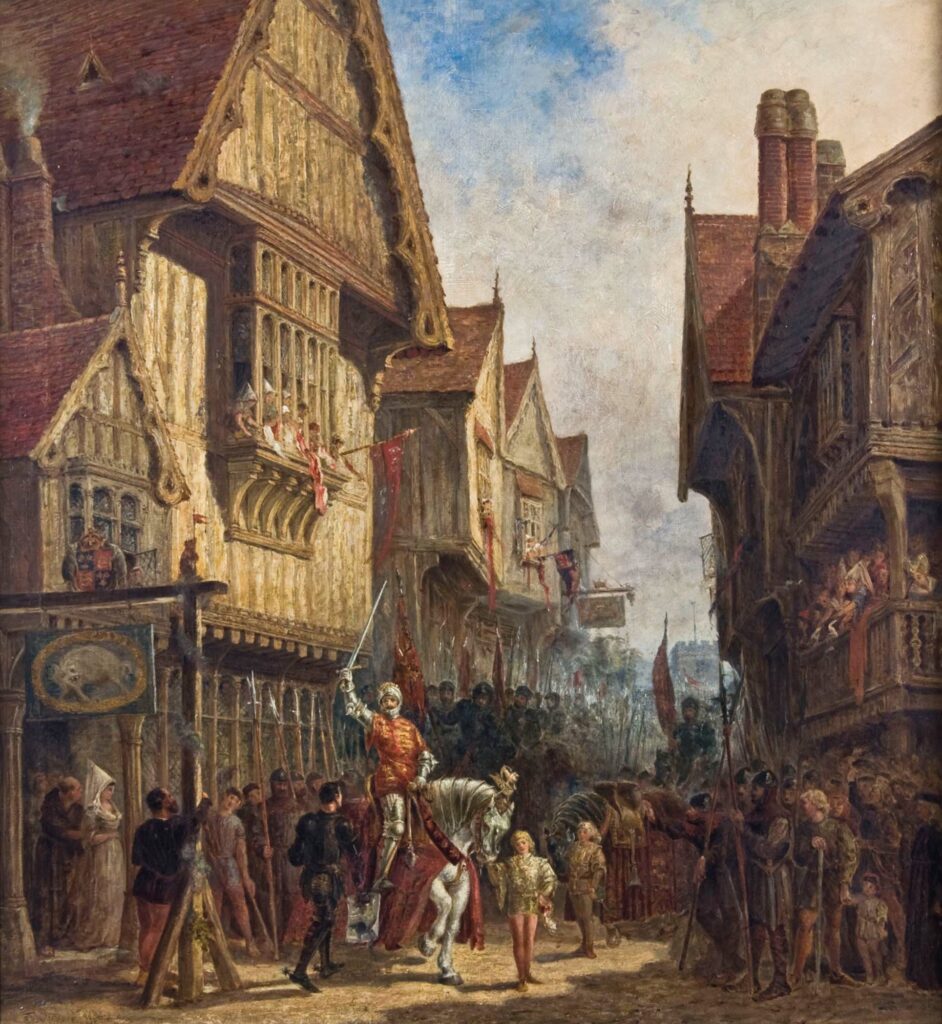
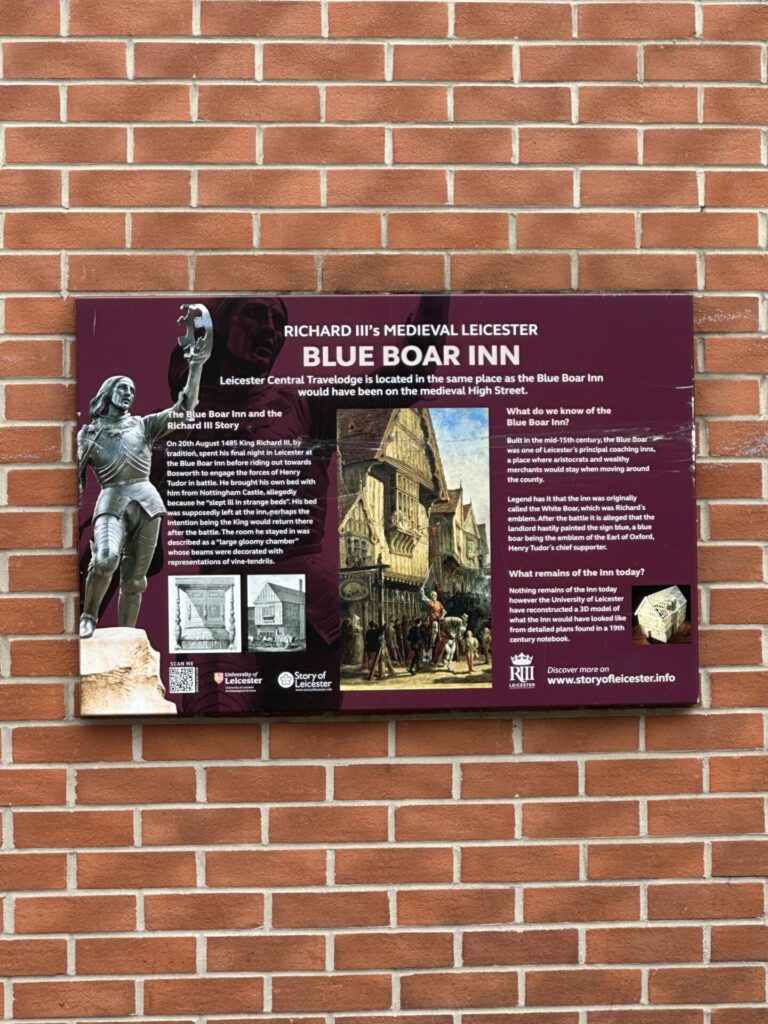
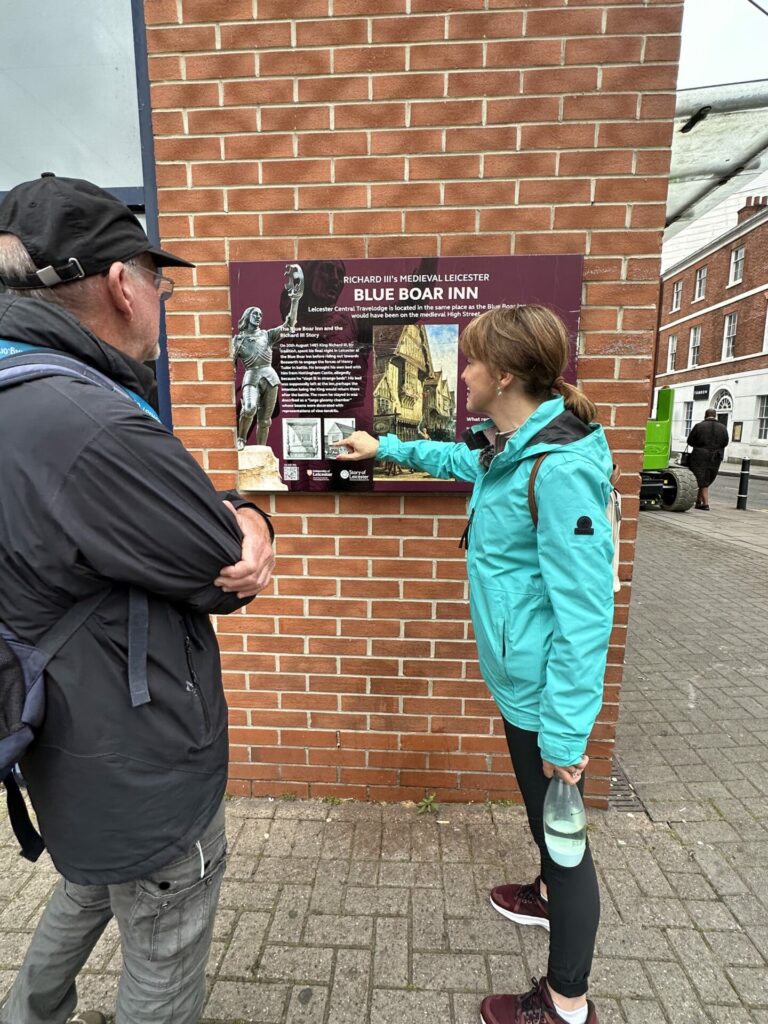
Two reconstructive images of The Blue Boar Inn, where Richard III is said to have stayed the night before heading to battle (Courtesy of Leicester City Council).
Steve and Sarah at the site of the original inn, where an information plaque has been placed.
Images © The Tudor Travel Guide.
Bow Bridge. Images © The Tudor Travel Guide.
Part 2: The Road To Bosworth Image Gallery
For this, the second part of our series of three podcasts, recorded on location to commemorate the birth of the Tudor dynasty, we travel to the site of Henry Tudor’s victory over the Yorkist King Richard III. We commence our story by visiting the Parish Church of St James in Sutton Cheney, close to the battle site.
A charming and otherwise unassuming church, King Richard III is said to have heard his final Mass here in preparation for battle. Inside the church, visitors can find plaques and memorials dedicated to the last Yorkist King.
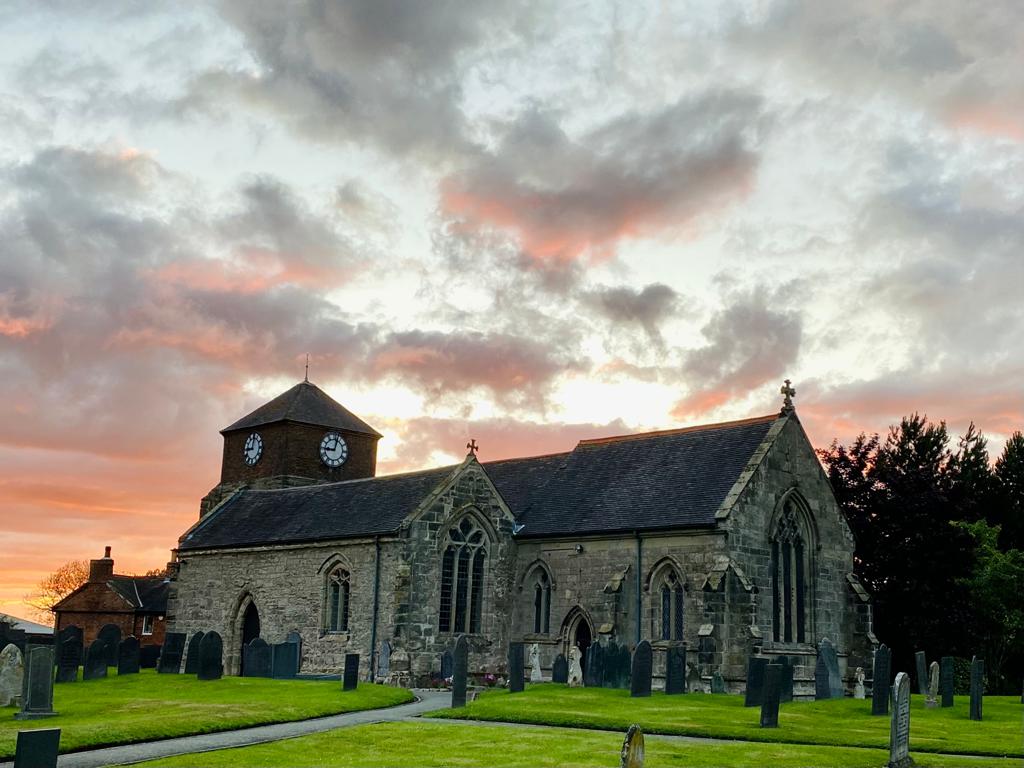
Church of St James, Sutton Cheney, known as the “Battlefield Church”.
AC6YBH8TEFUL, CC BY-SA 4.0 via Wikimedia Commons.
From here, we travel a short distance to the Bosworth Heritage Centre, where our expert guest, Harry Marr, joins me to explore the story of the battle as we tour the site where one king fell while another rose to power.
The precise location of the skimrish has been a subject of debate and research over the years. Initially, the battlefield was believed to be near Ambion Hill, but extensive research and archaeological findings in recent years have shifted the location to nearby fields around Fenn Lane.
Tune in to listen to the full story of why the battle took place where it did and how Henry Tudor, with the smaller army, won the day, emerging as the victorious Henry VII, founder of the Tudor dynasty.
Sarah and Harry at Bosworth Battlefield on (left) Ambion Hill, (centre) King Richard’s Well, (right) overlooking the field where the rout of the Yorkist troops most likely occurred towards the end of the battle. Images © The Tudor Travel Guide.
Inside the Bosworth Heritage Centre: The centre explores various aspects of the battle of Bosworth Field and is very interactive, as you can see. It includes various artefacts, including a casket with soil from the key places associated with Richard III and the tiny (29mm long) silver-gilt Bosworth Boar Badge.
Images © The Tudor Travel Guide.
Part 3: The Road To Bosworth Image Gallery
Following the Battle at Bosworth Field, Henry Tudor returned Richard III’s body to Leicester. The dead king was famously stripped naked, carried over a horse back into the town, and displayed publicly in the Chruch of the Annunciation before being buried in a humble grave at Greyfriars.
King Richard’s remains were rediscovered and identified in 2012 as part of a collaboration between the Richard III Society and the University of Leicester Archaeological Services. Excavations started in a car park where historical records suggested the Greyfriars Church of the old medieval city once stood. Remarkably, within days, the team uncovered a skeleton with significant injuries consistent with those sustained in battle. The skeleton was found in a hastily dug grave, confirming the historical accounts of Richard’s burial.
The confirmation that the skeleton was Richard III’s was announced in February 2013; he was subsequently reinterred in Leicester Cathedral in March 2015, close to where his remains were found.
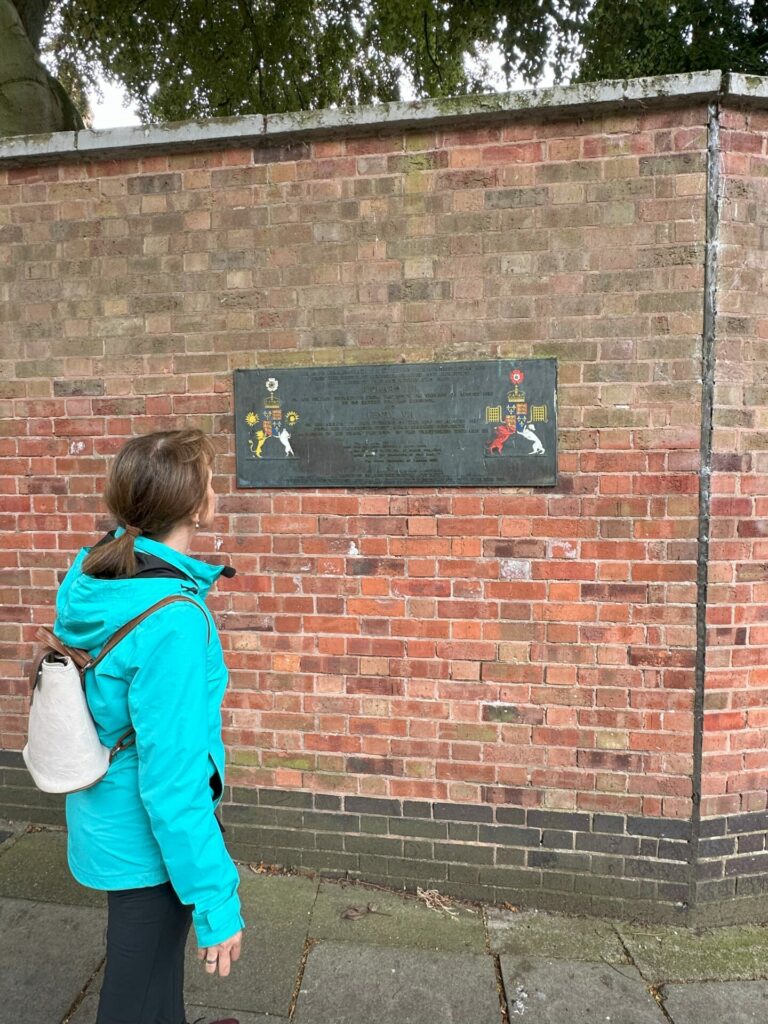
A commemorative plaque close to Leicester’s old castle marks 500 years since the Battle of Bosworth.
Image © The Tudor Travel Guide.
The site of Leicester Castle, including the old gateways that once led into the castle precinct.
Images © The Tudor Travel Guide.
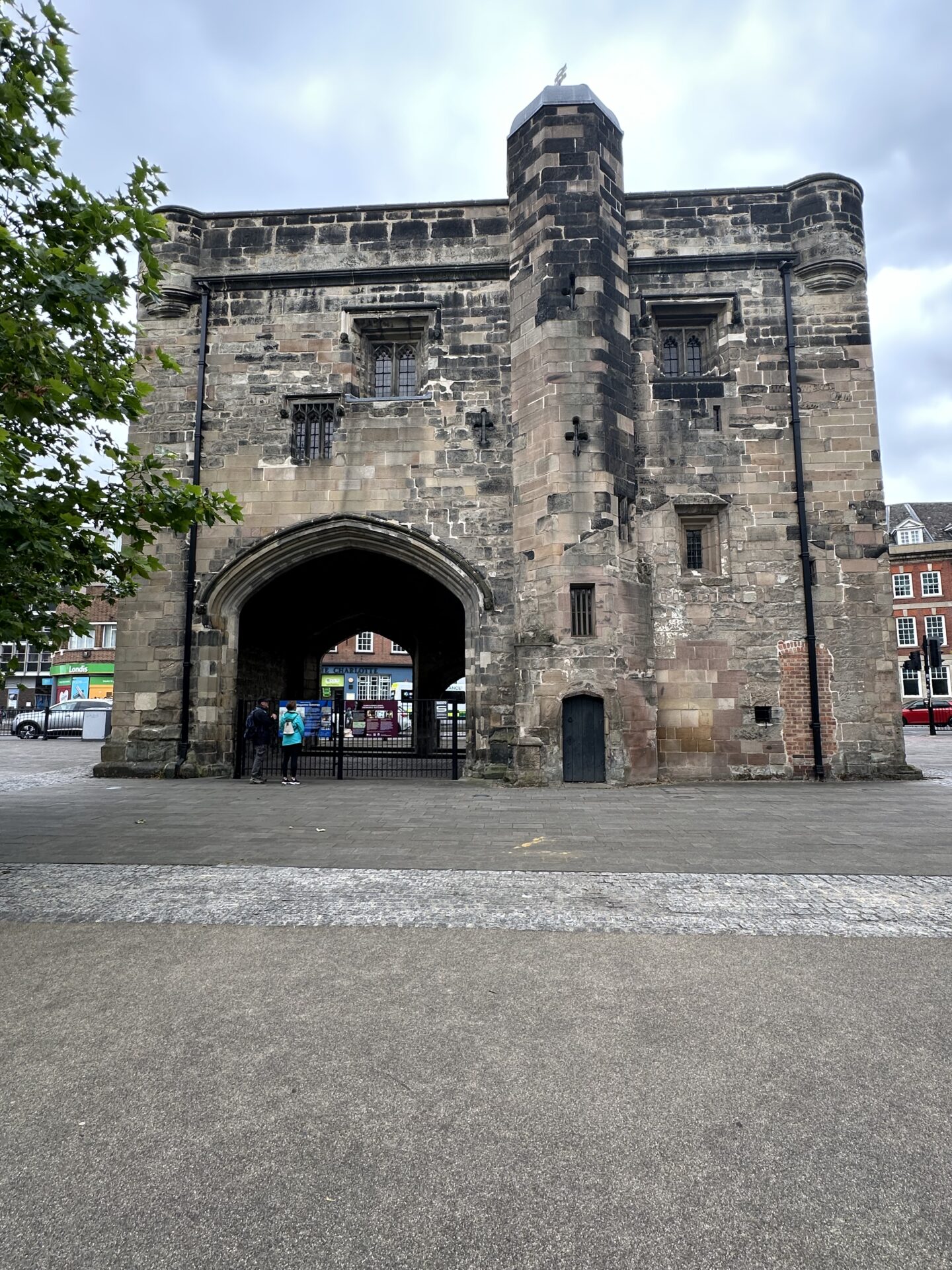
Top left: The information board is outside where the Church of the Annunciation once stood.
Top right and below: Outside the Newarke Gateway. This is the one-time entrance to the Newarke. Richard’s body was likely conveyed under this gateway on its final journey to Greyfriars for burial.
Images © The Tudor Travel Guide.
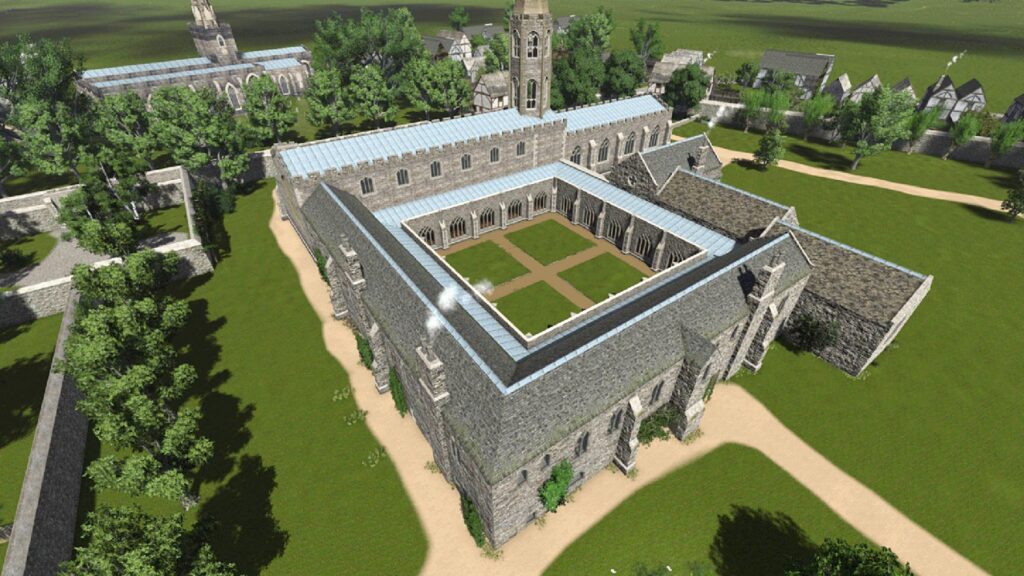
On the site of Greyfriars, where Richard’s body was hastily interred following the battle, including the entrance to possibly the most famous car park in the world!
A reconstruction of the Greyfriars, Leicester (courtesy of Leicester City Council)
Images © The Tudor Travel Guide.
Sarah and Steve at the spot where King Richard III’s remains were found, now part of the KRIII Visitor Centre.
Floor tiles show the original flooring of the priory church, close to where Richard’s body was found.
The commemorative statue of Richard is erected opposite the visitor centre.
Images © The Tudor Travel Guide.
Leicester Cathedral: Sarah meets with guide Rebecca Hale to discuss the reinternment of Richard III’s body and the symbolism imbued in his twenty-first-century tomb.
Images © The Tudor Travel Guide.
Useful Links
To contact Steve Bruce for guided tours, email him at: leicesterguides@gmail.com.
Bosworth Battlefield Heritage Centre
– For guided walks and events, click here
– For information on the 1485 Tithe Barn Cafe click here
King Richard iii Visitor Centre
For information on the Church of St James, Sutton Cheney, click here. To contact the church, click here.
For information on Leicester Cathedral, click here.

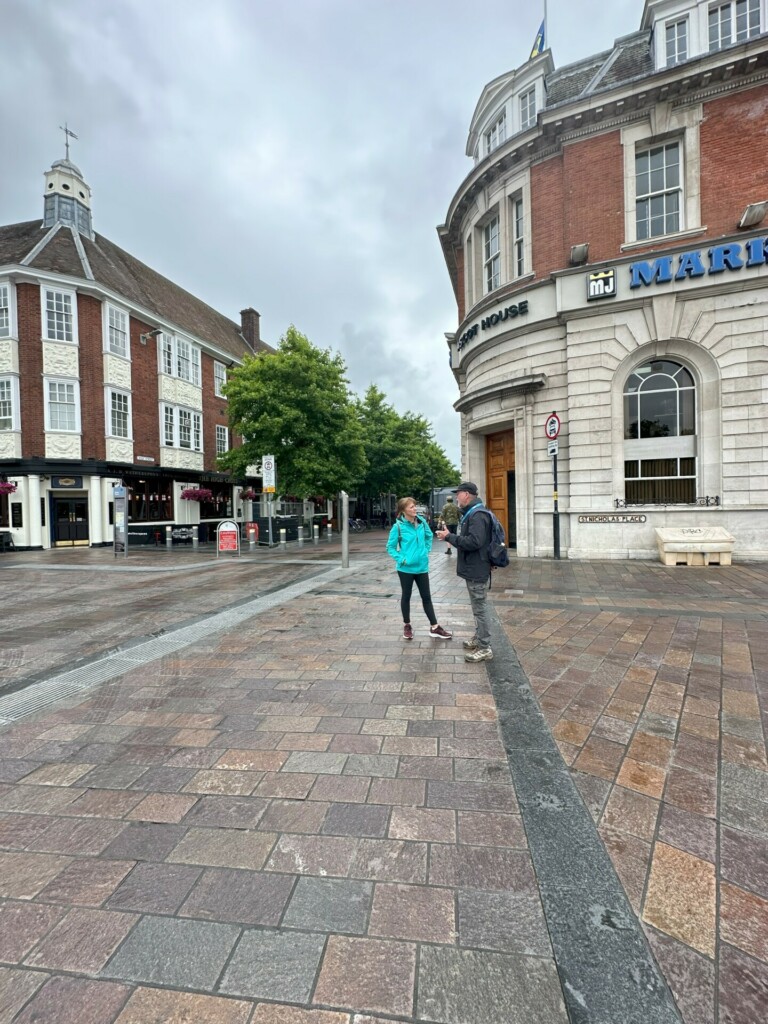
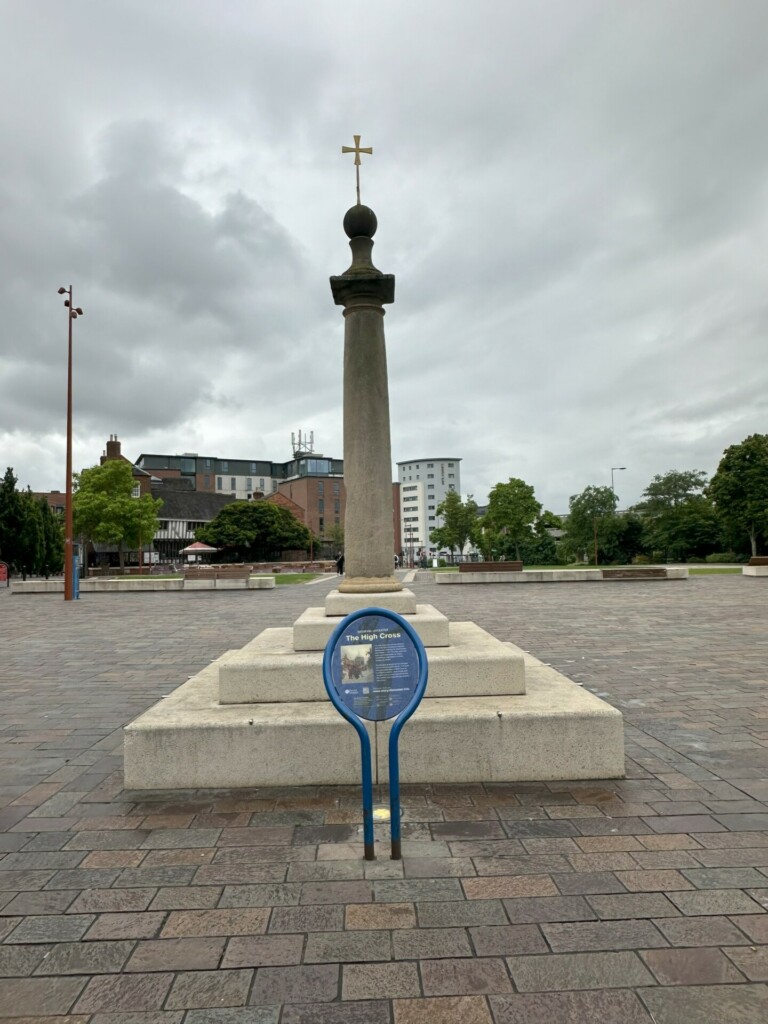
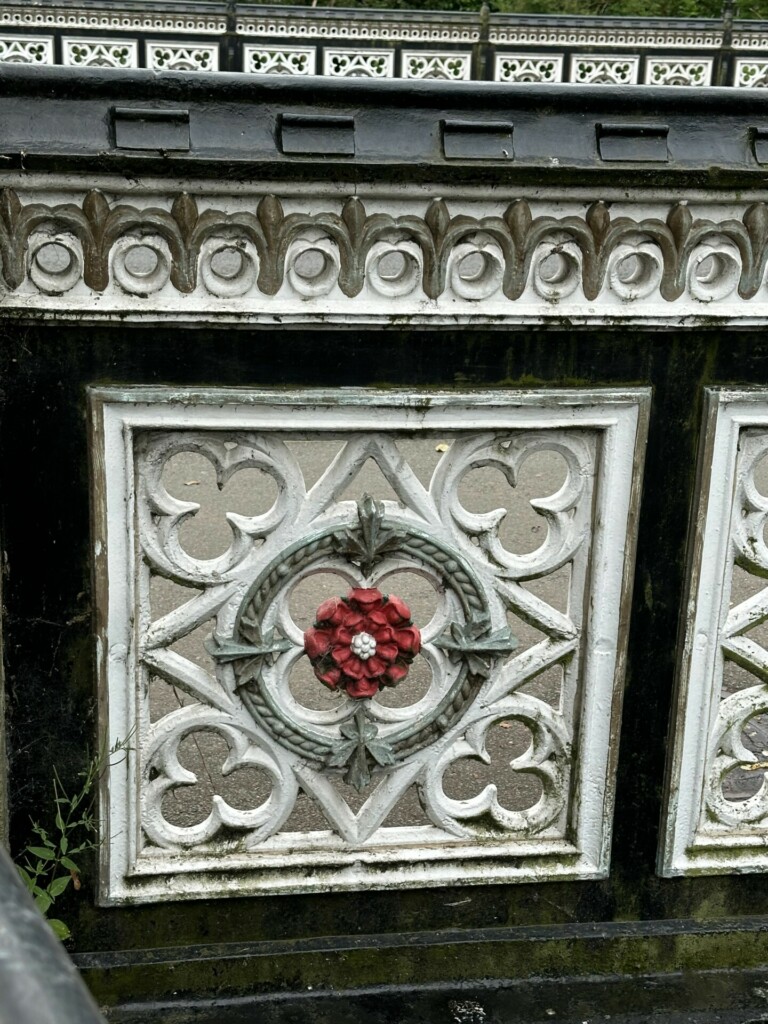
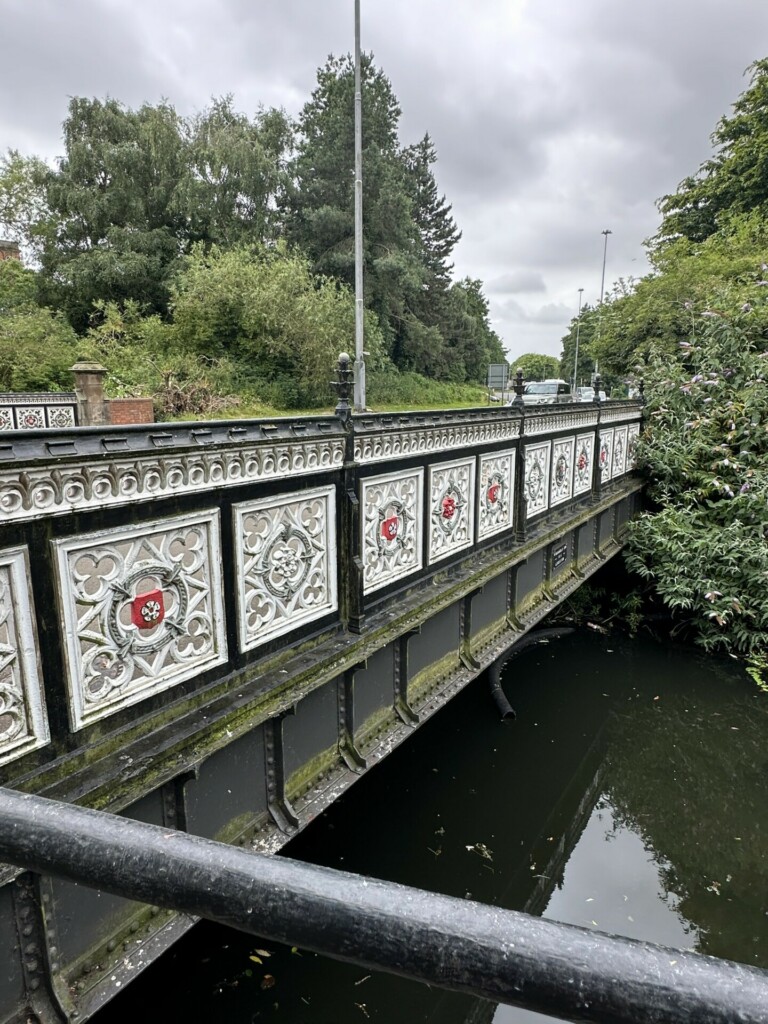
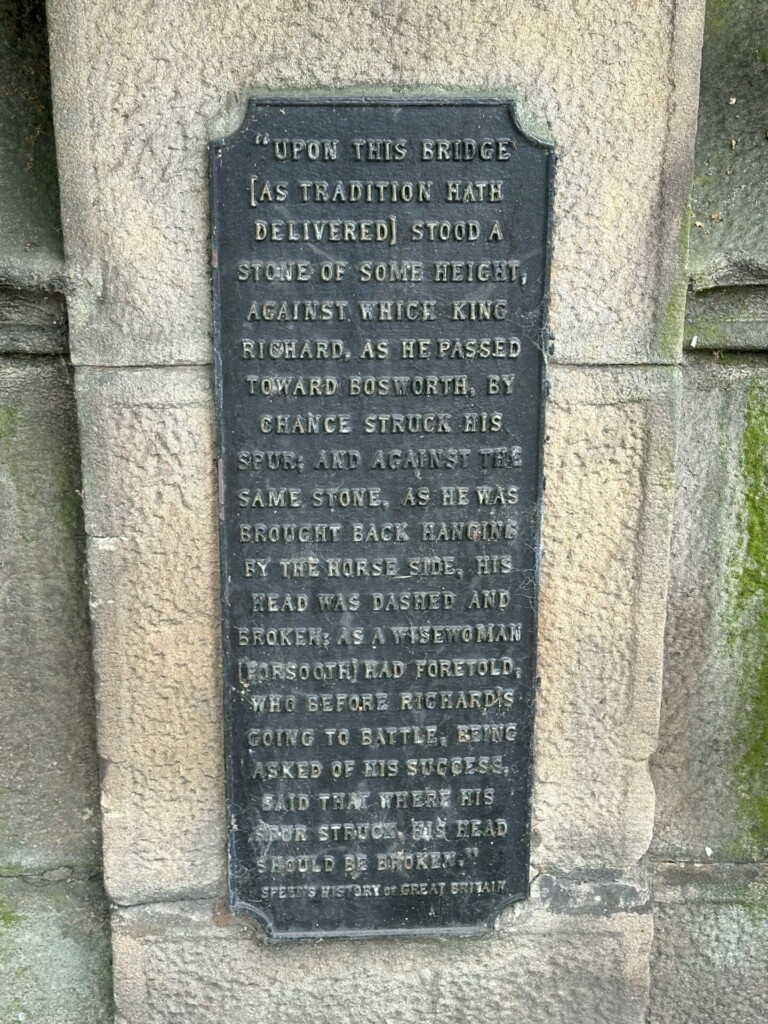
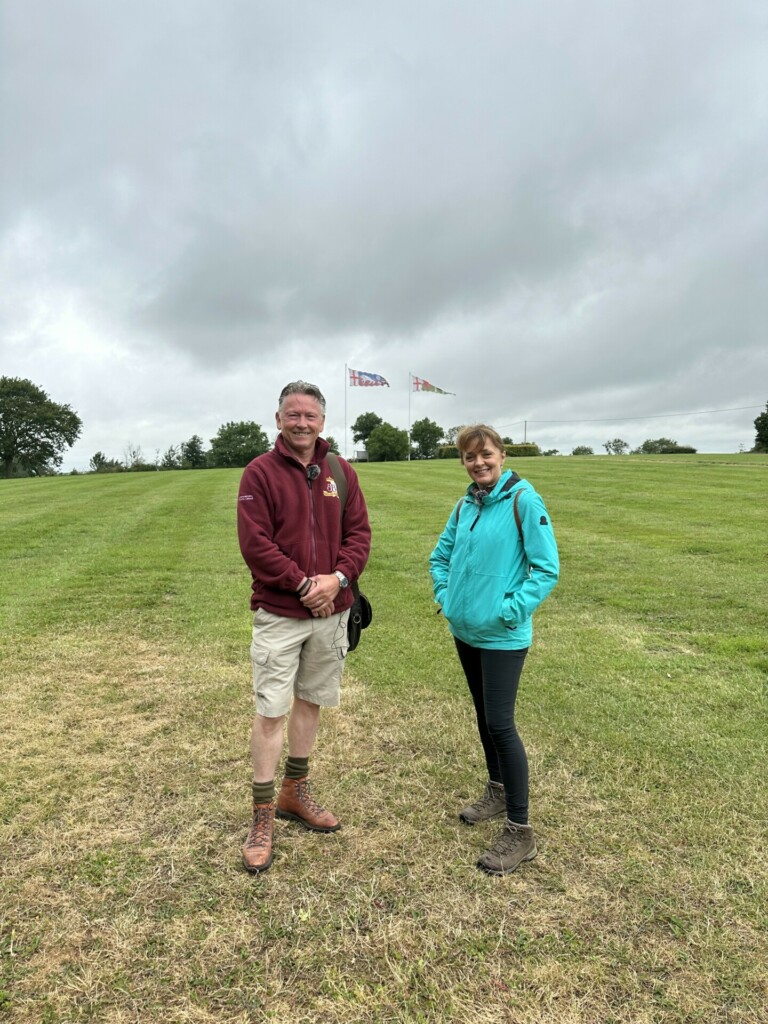
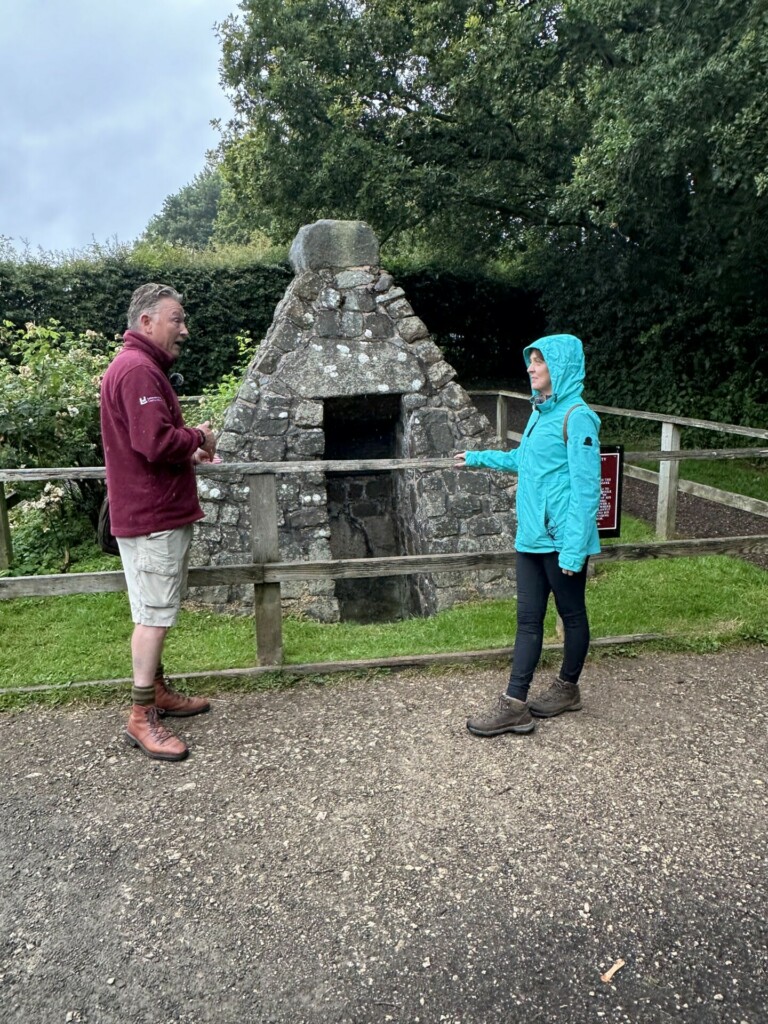
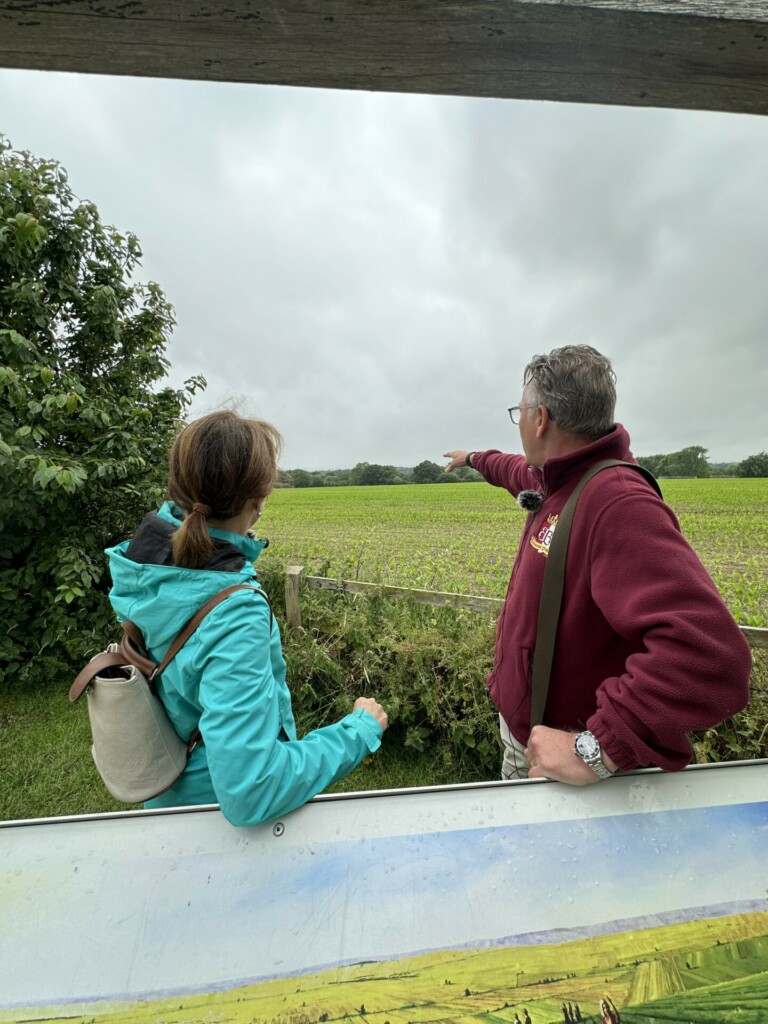
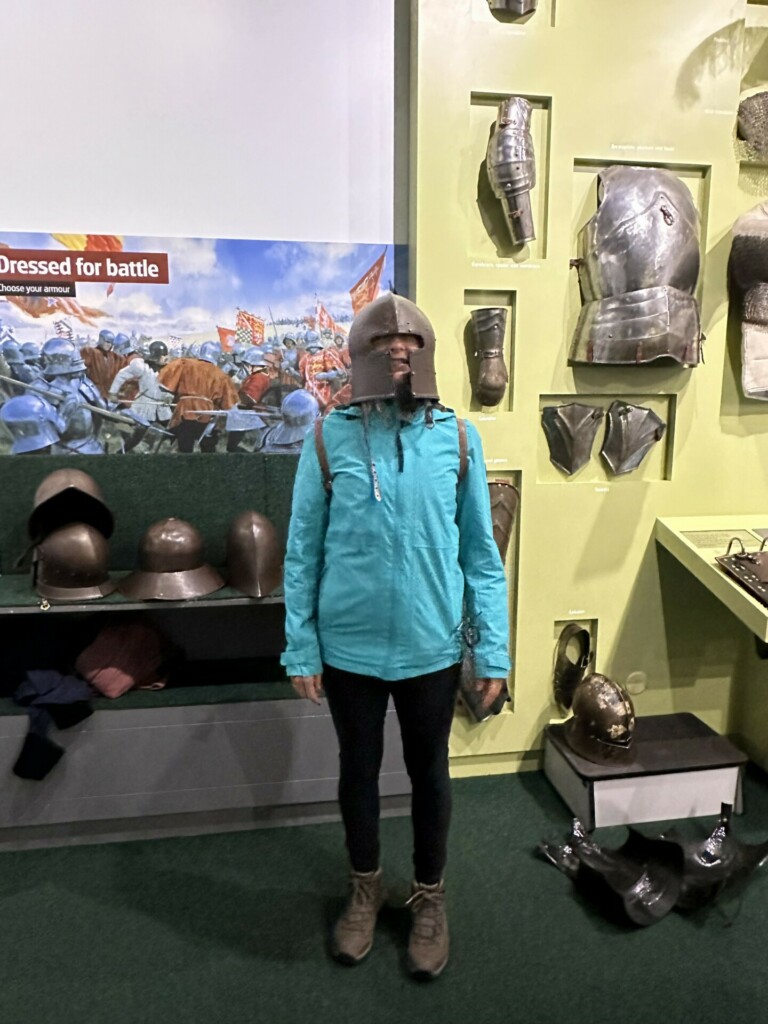
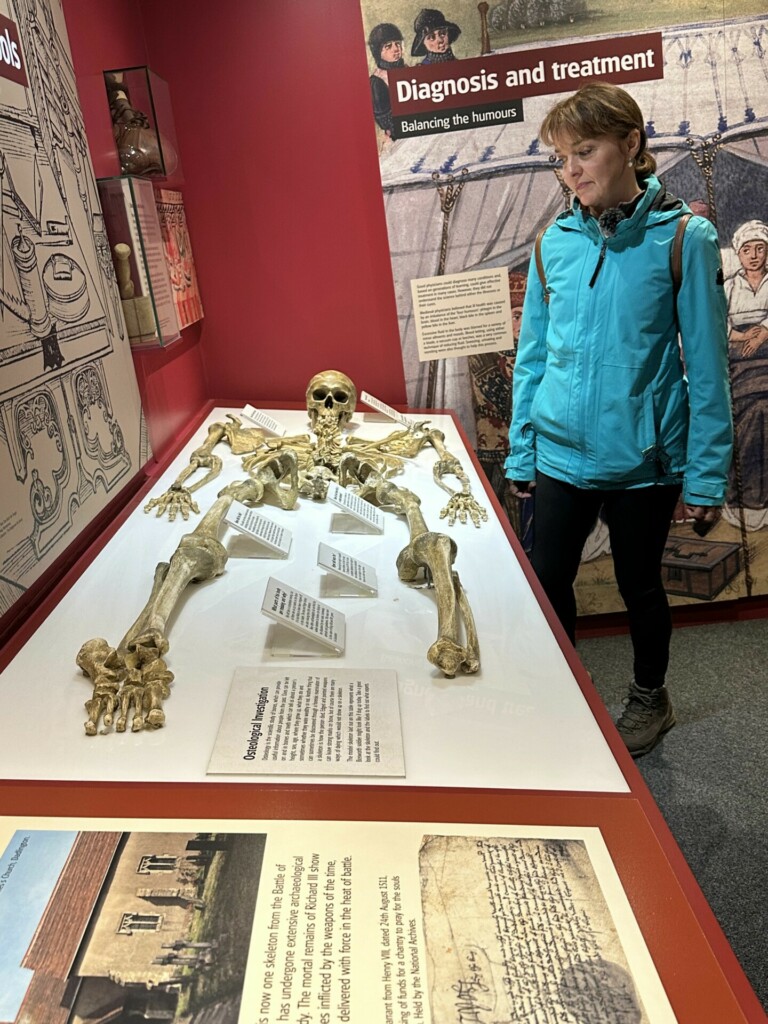
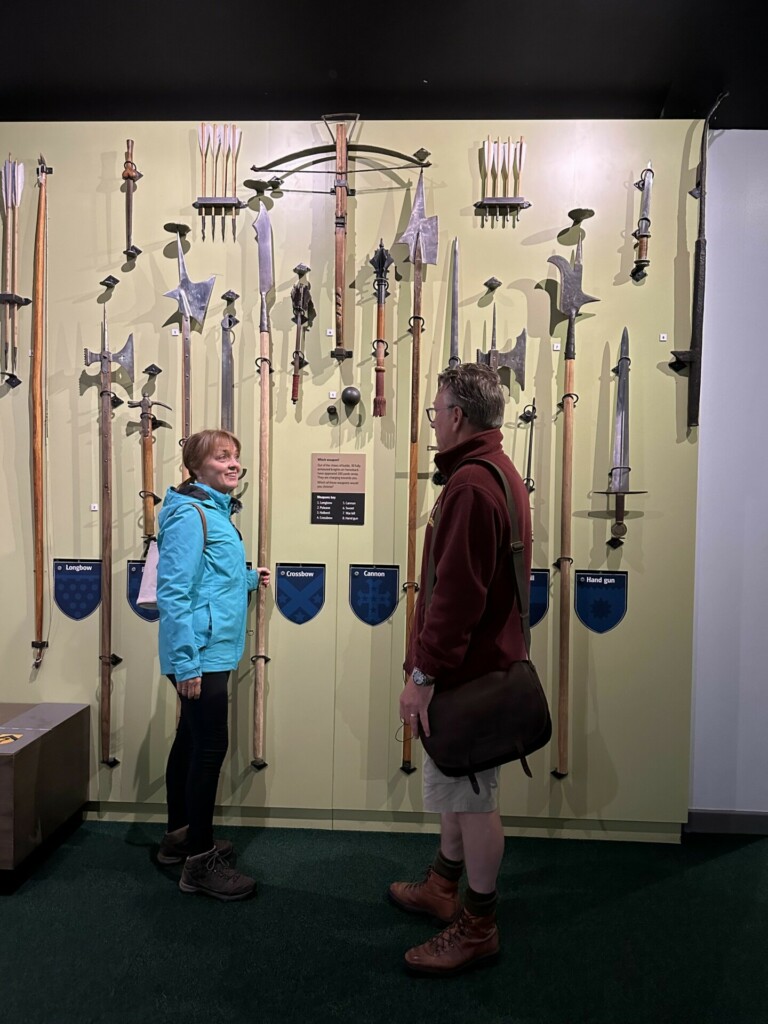
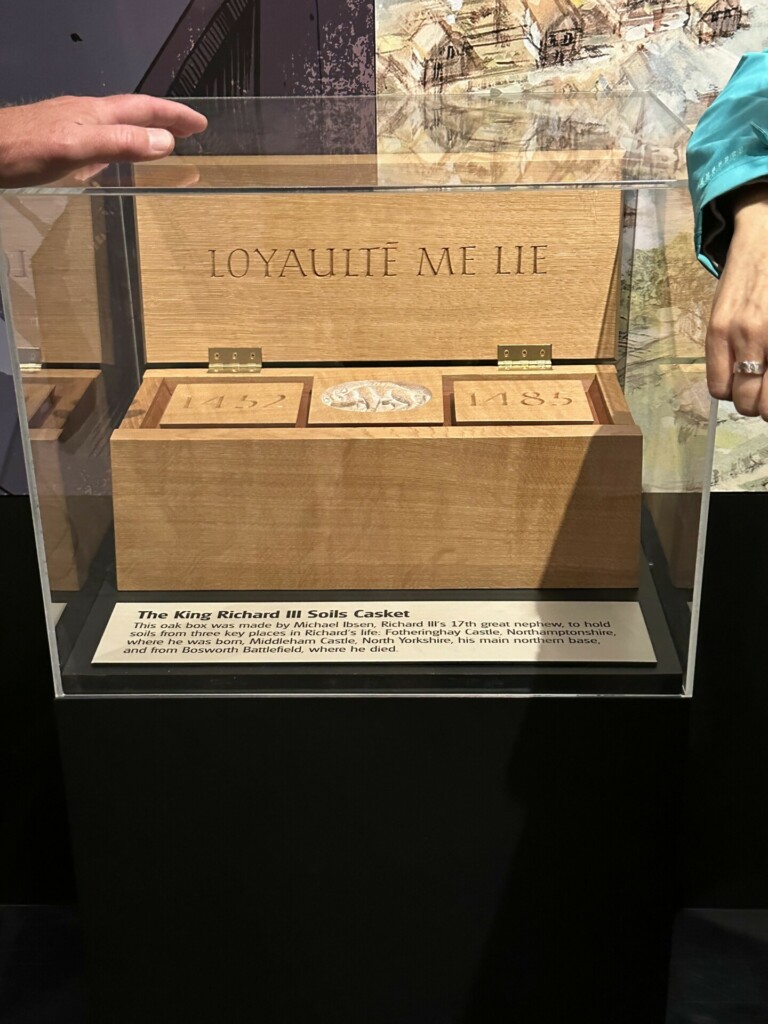
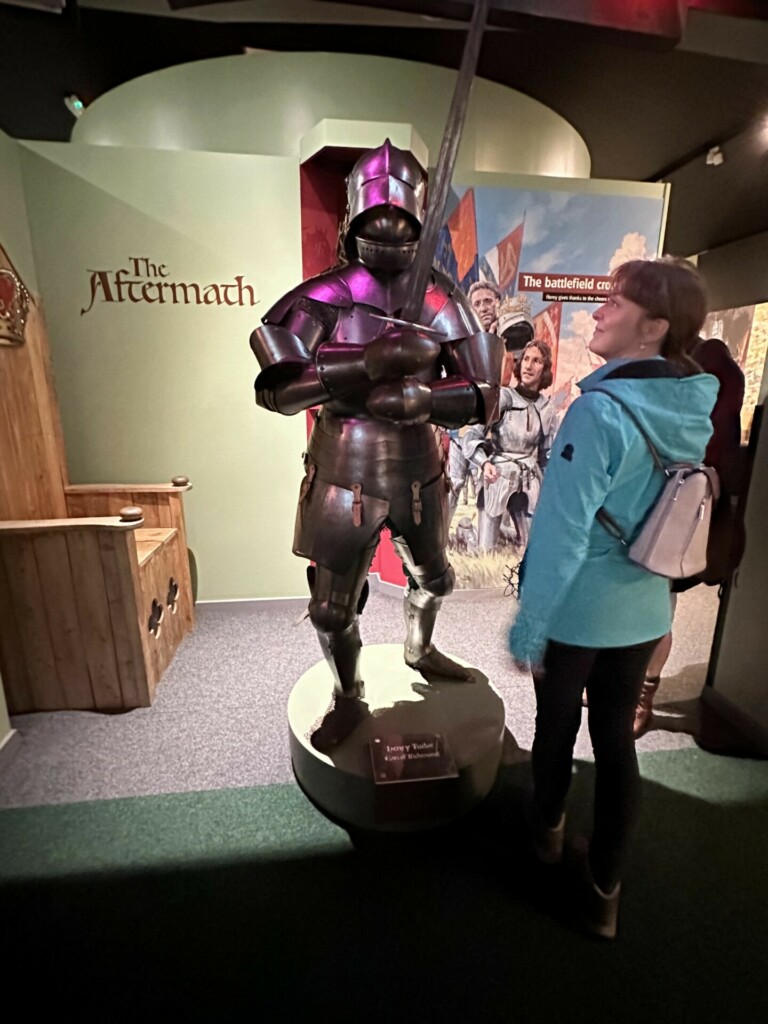
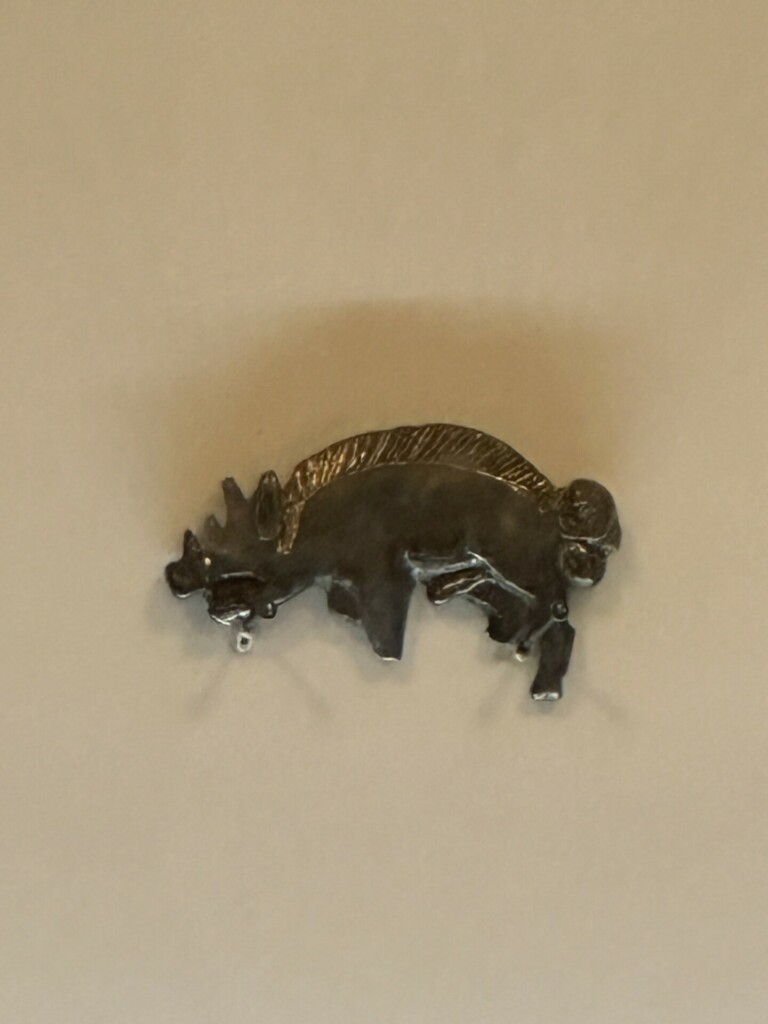
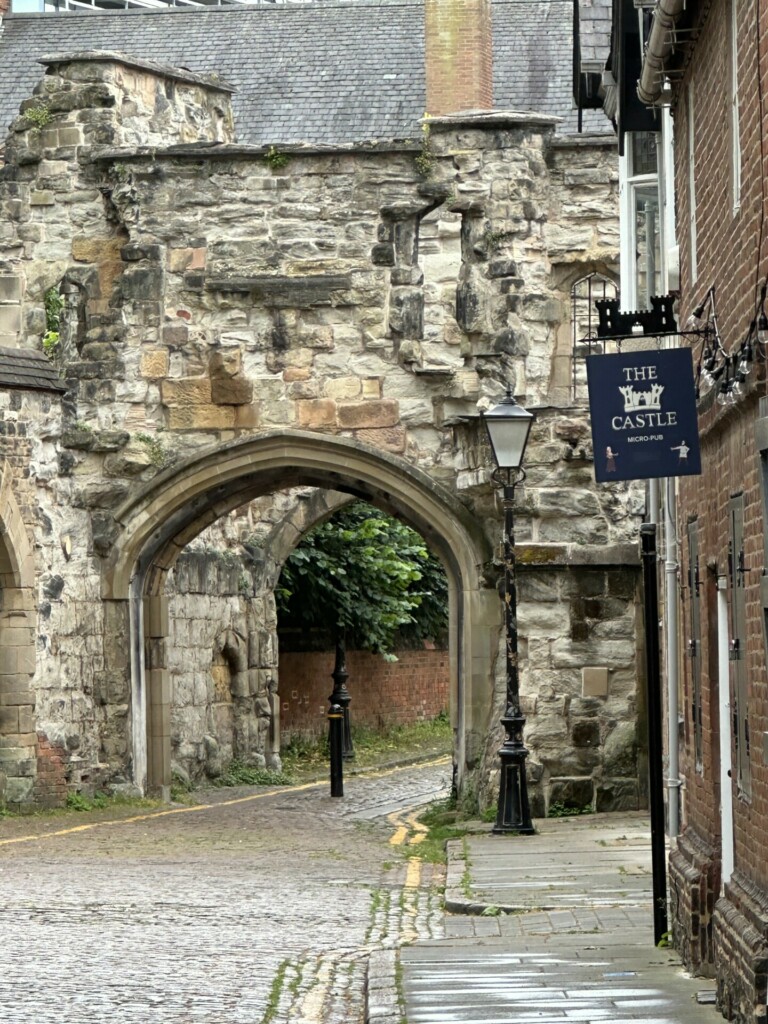
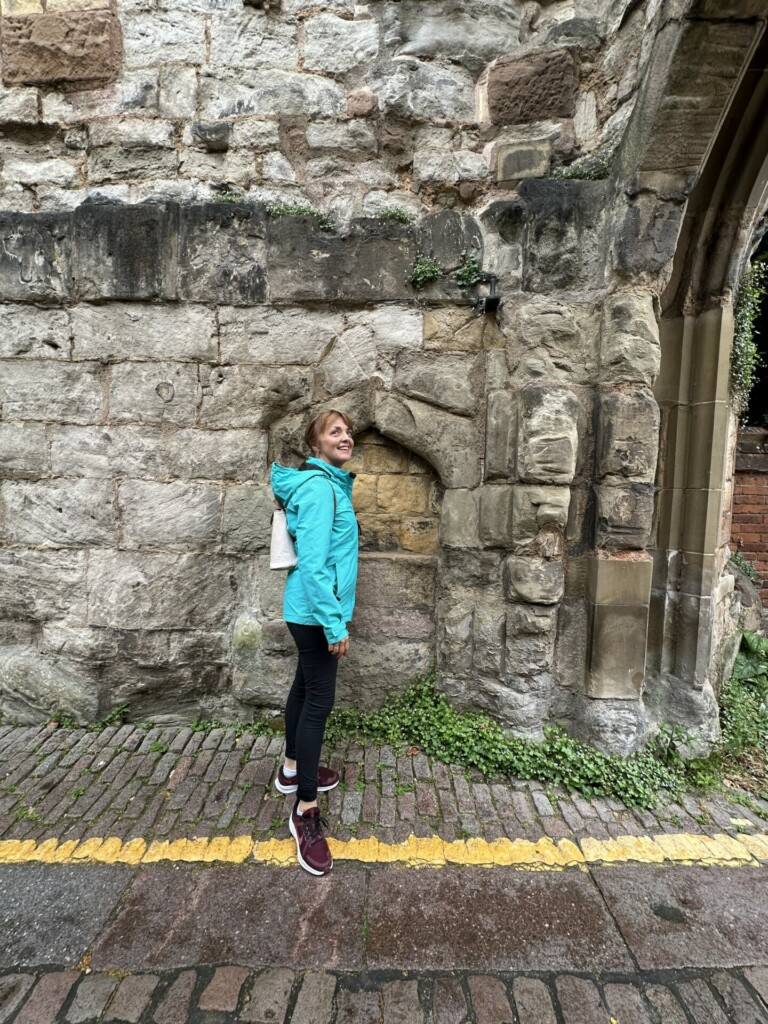
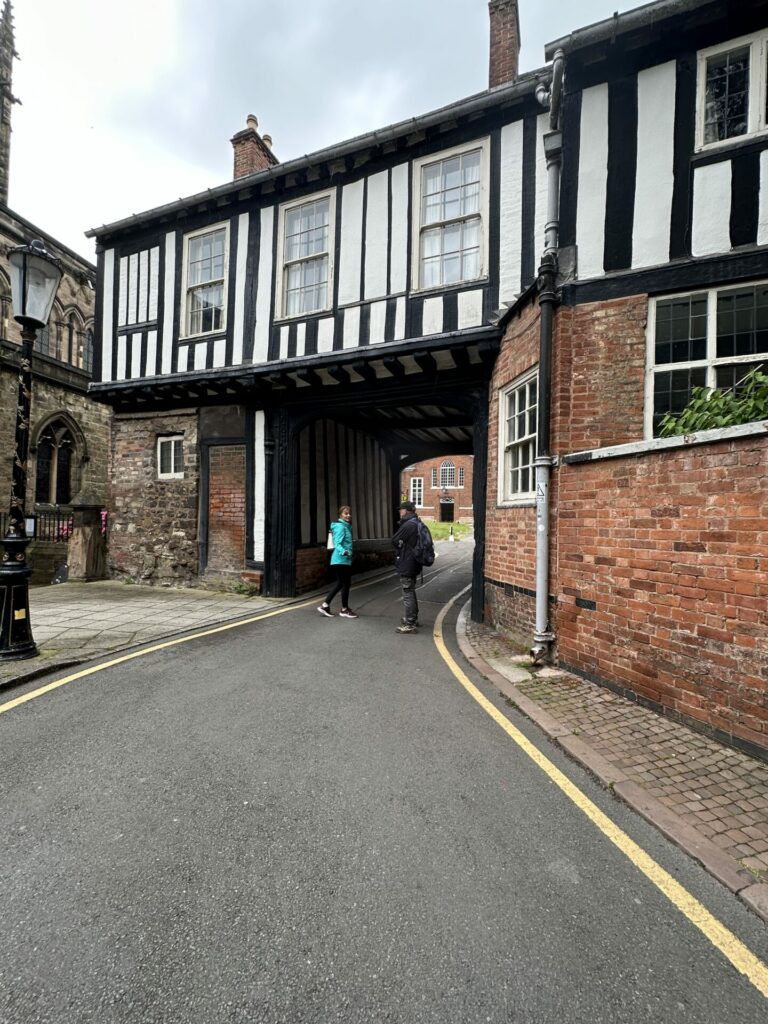
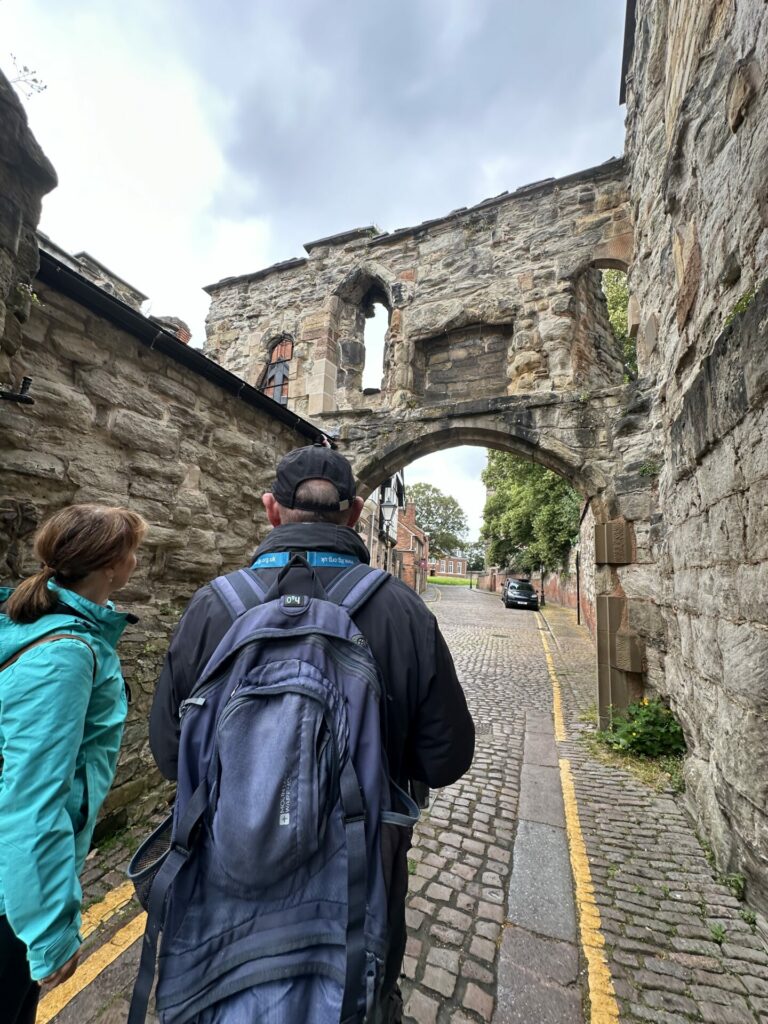
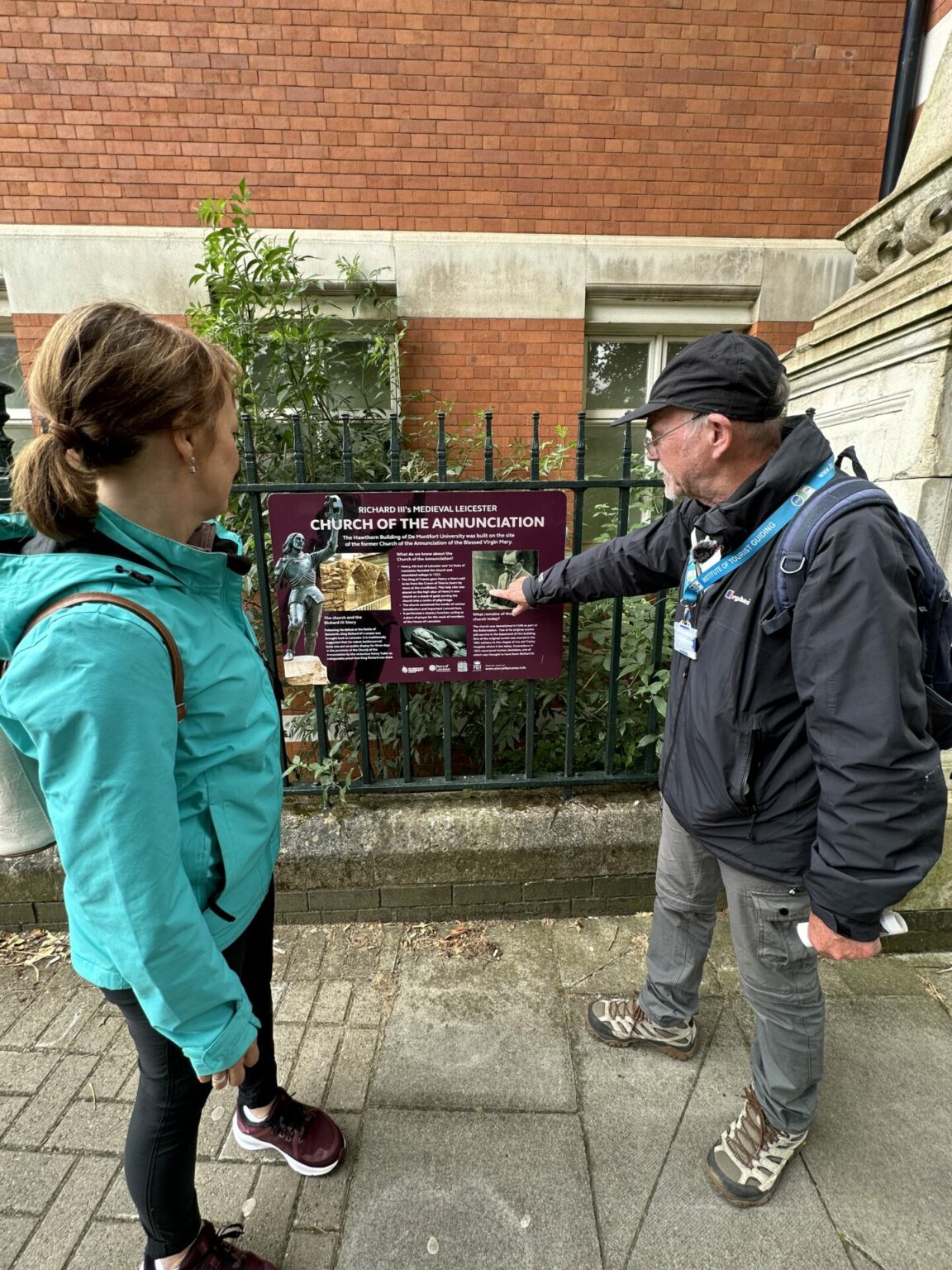
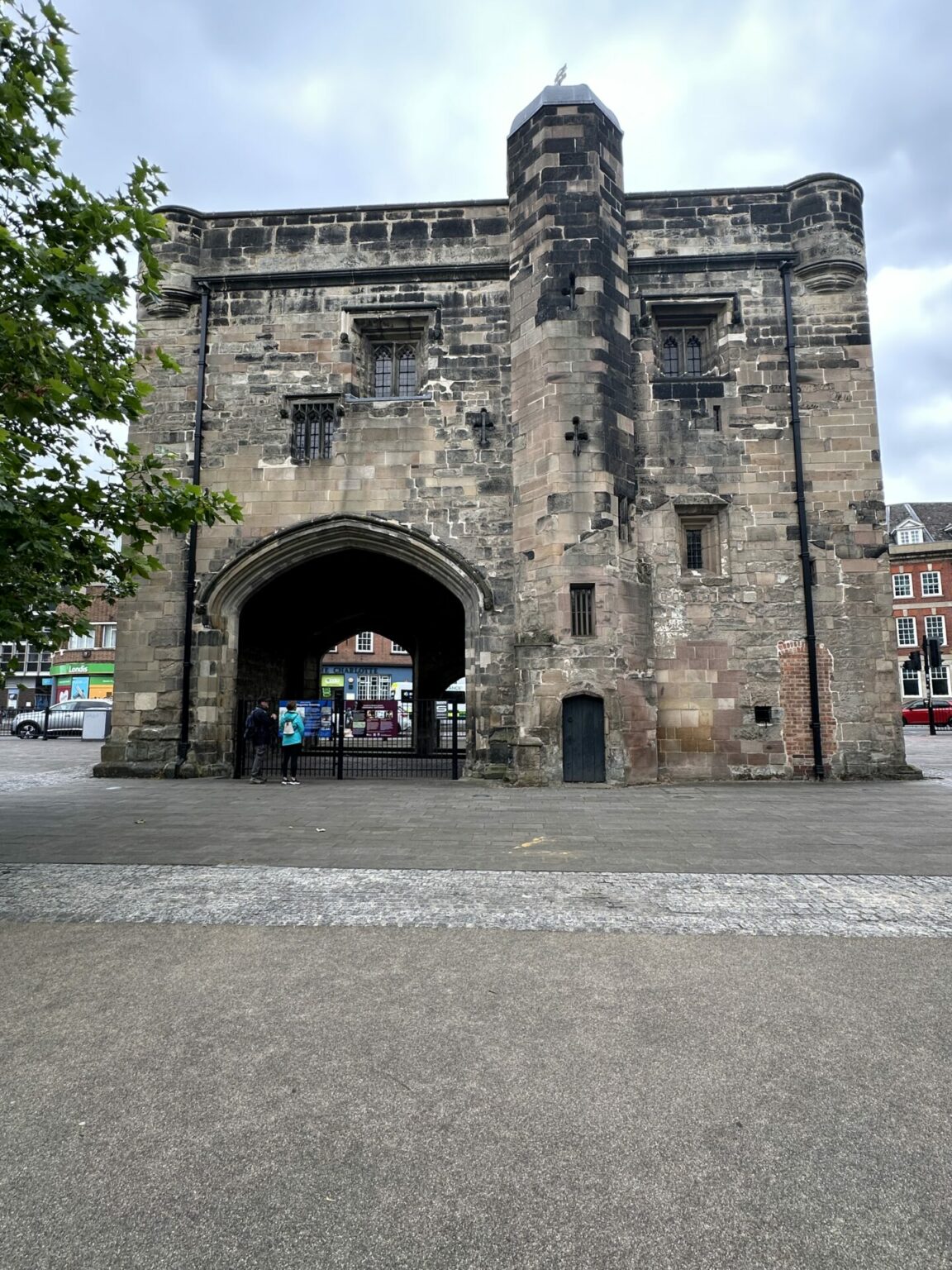
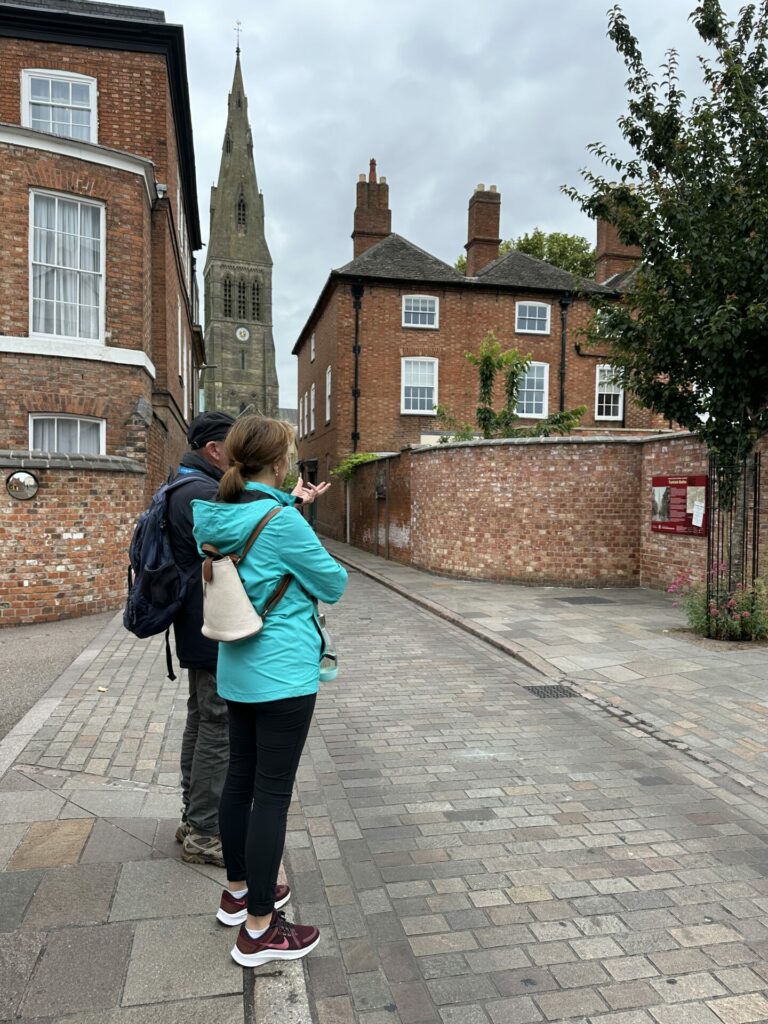
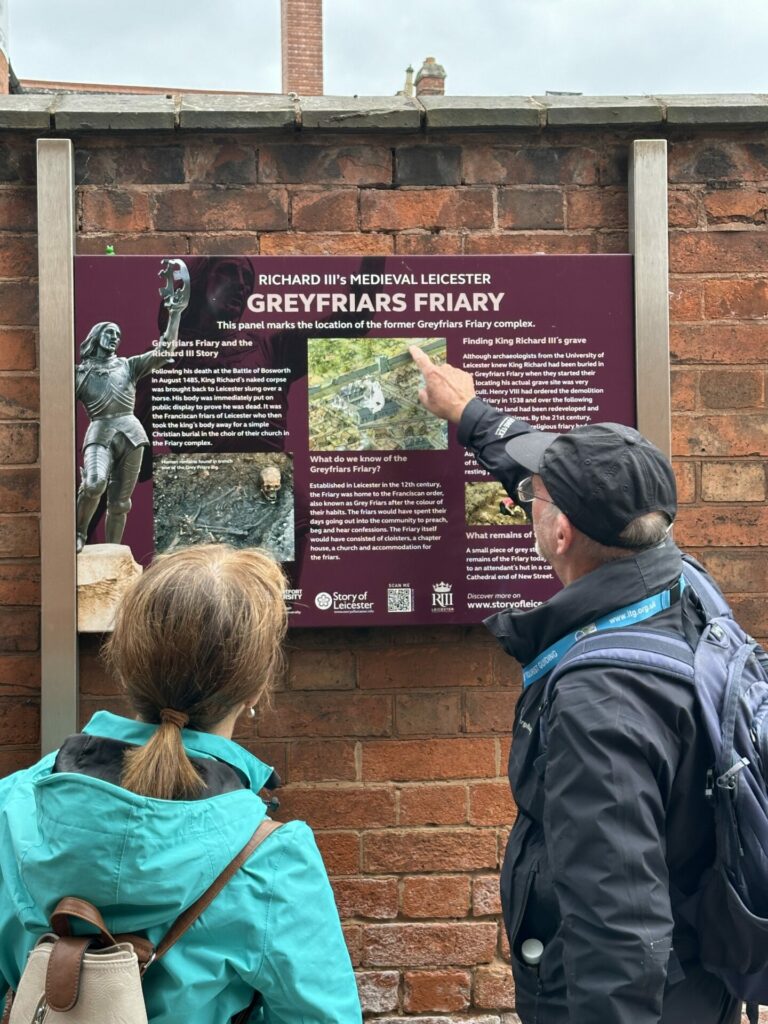
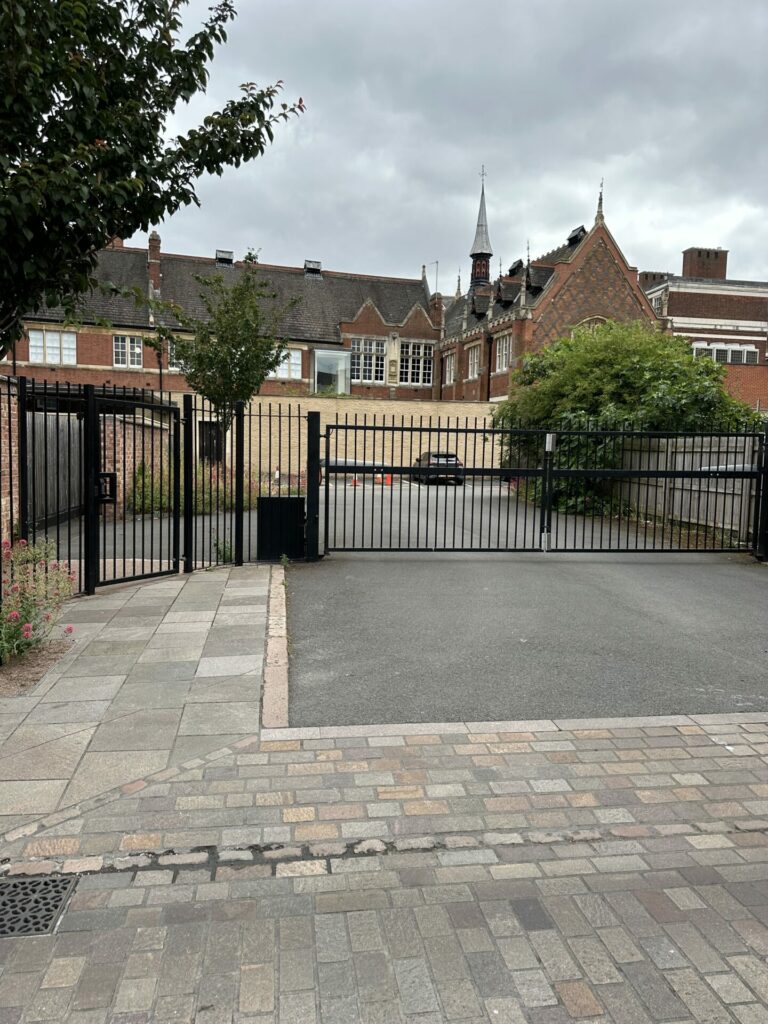
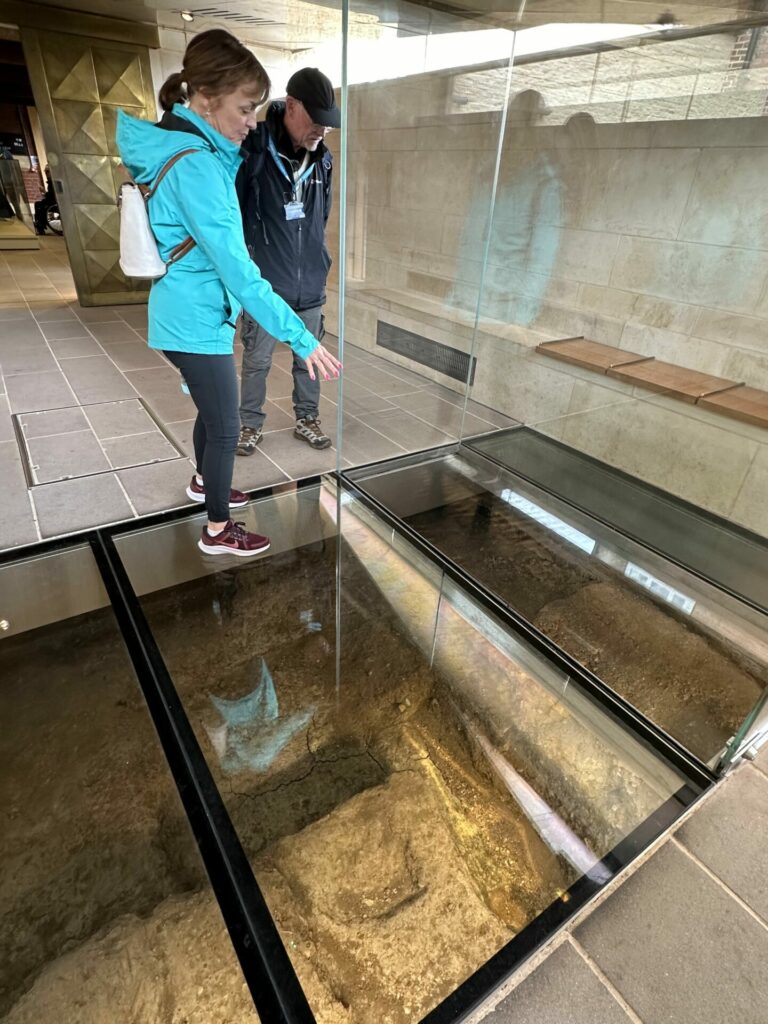
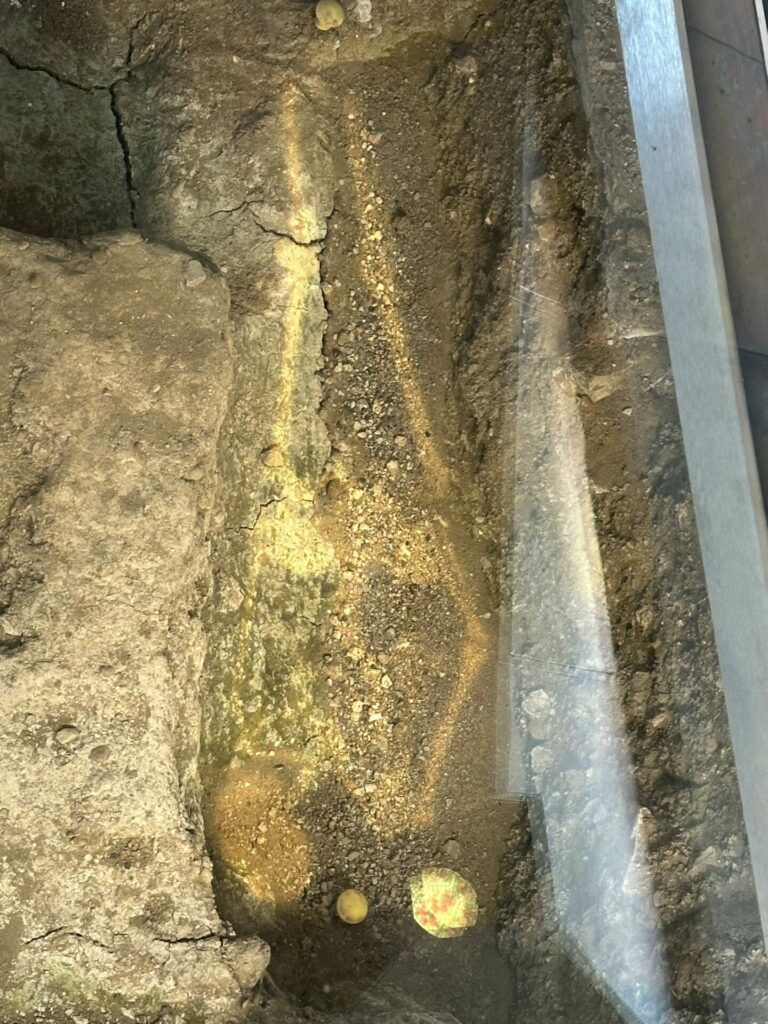
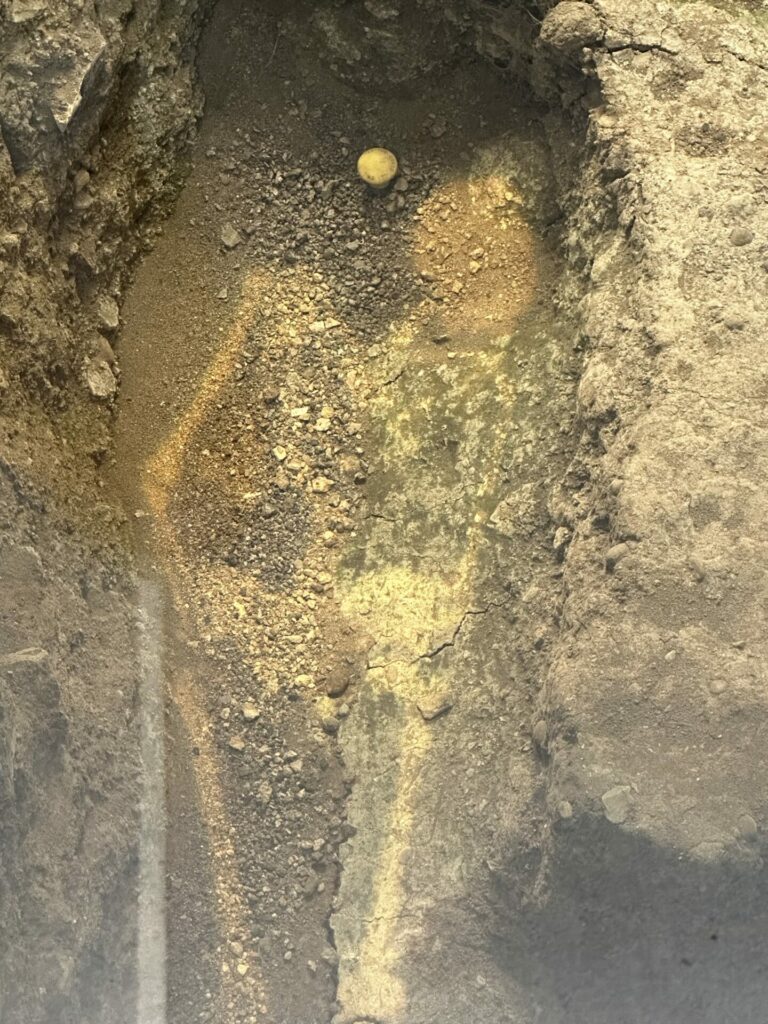
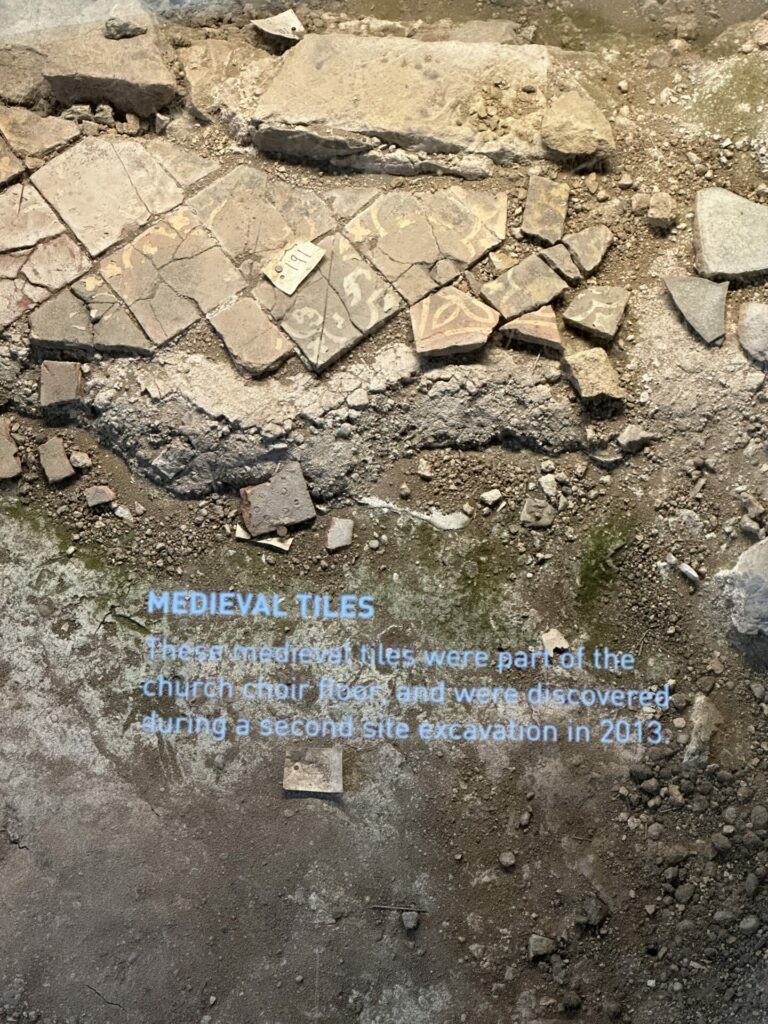
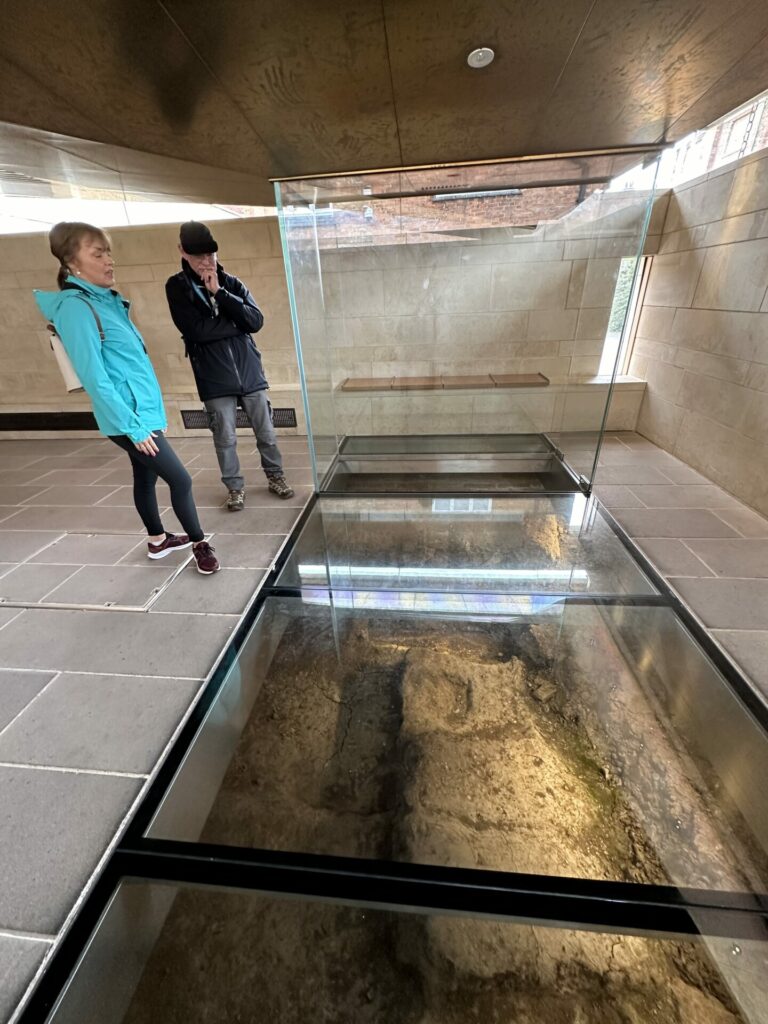
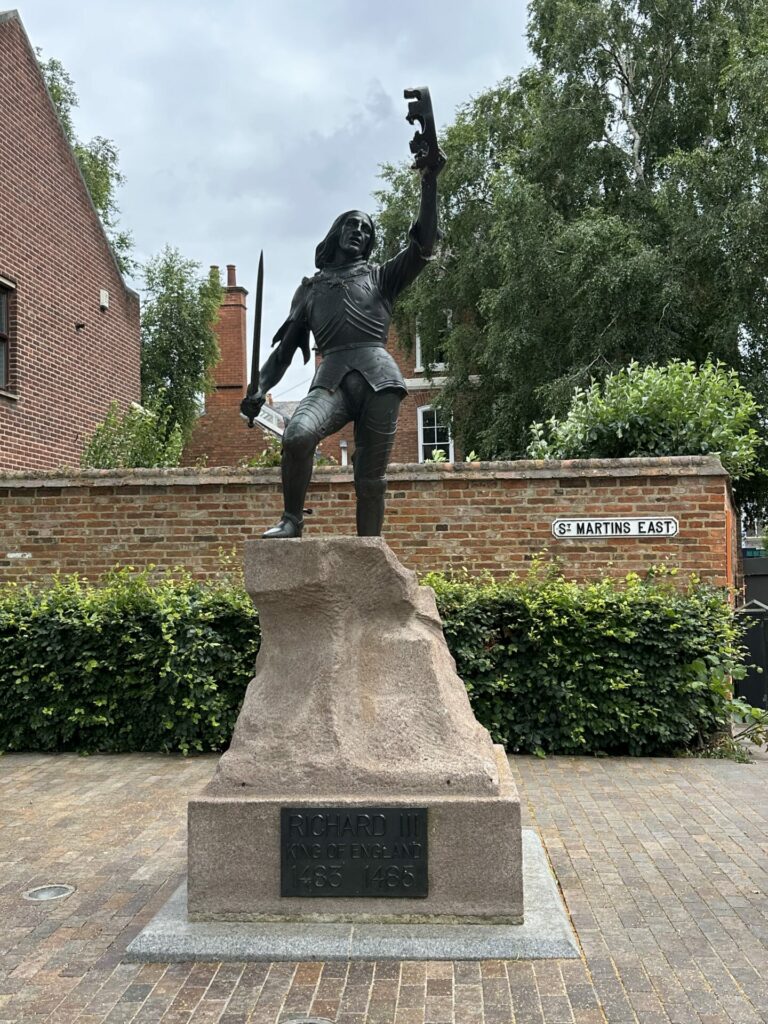
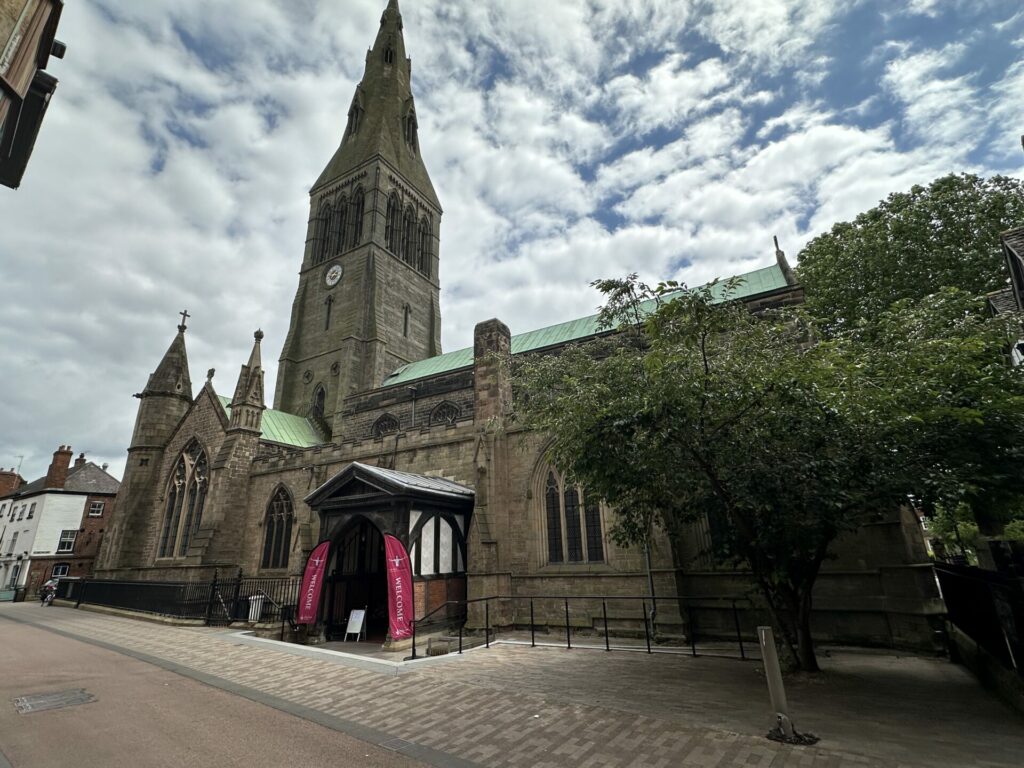
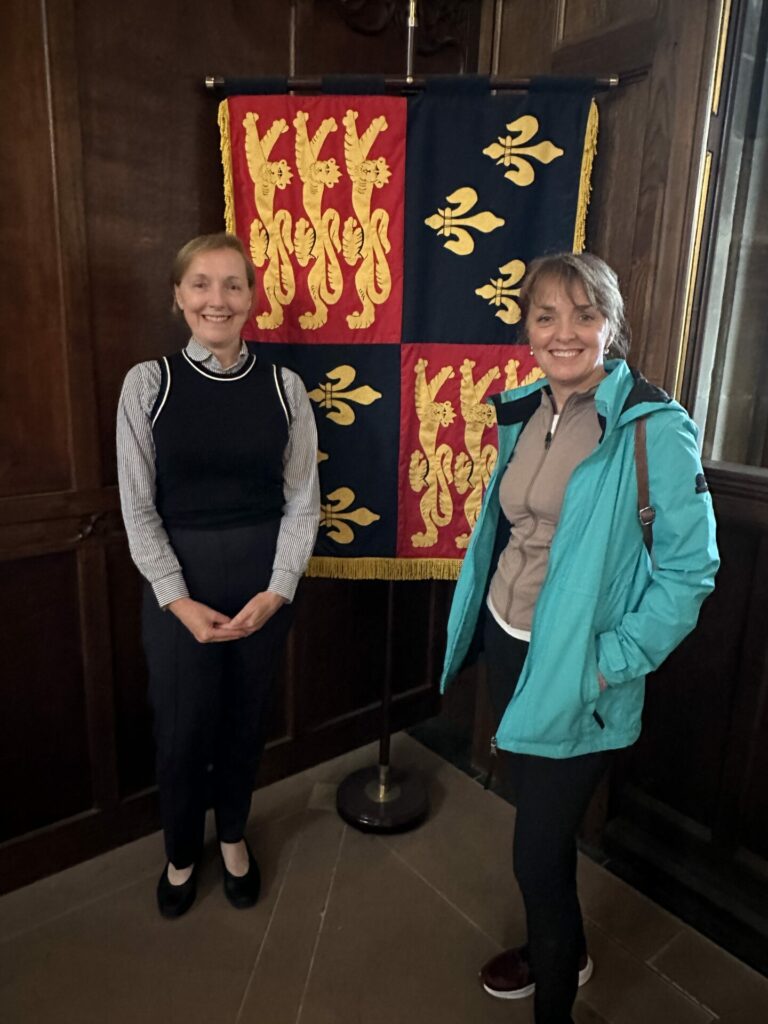
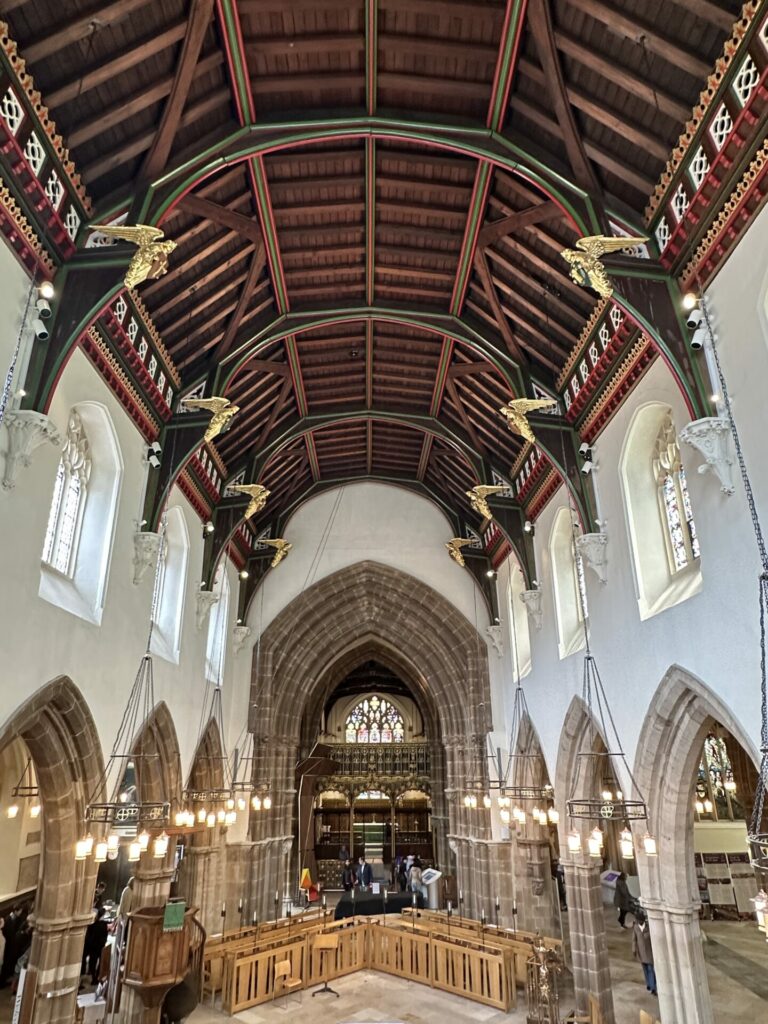
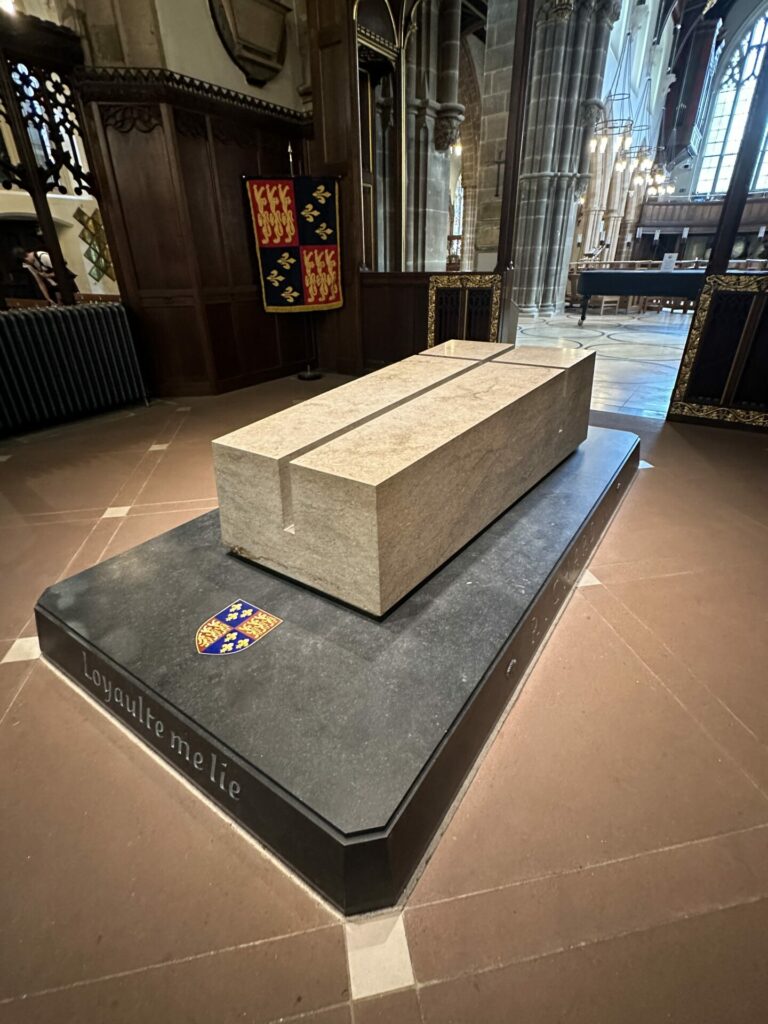
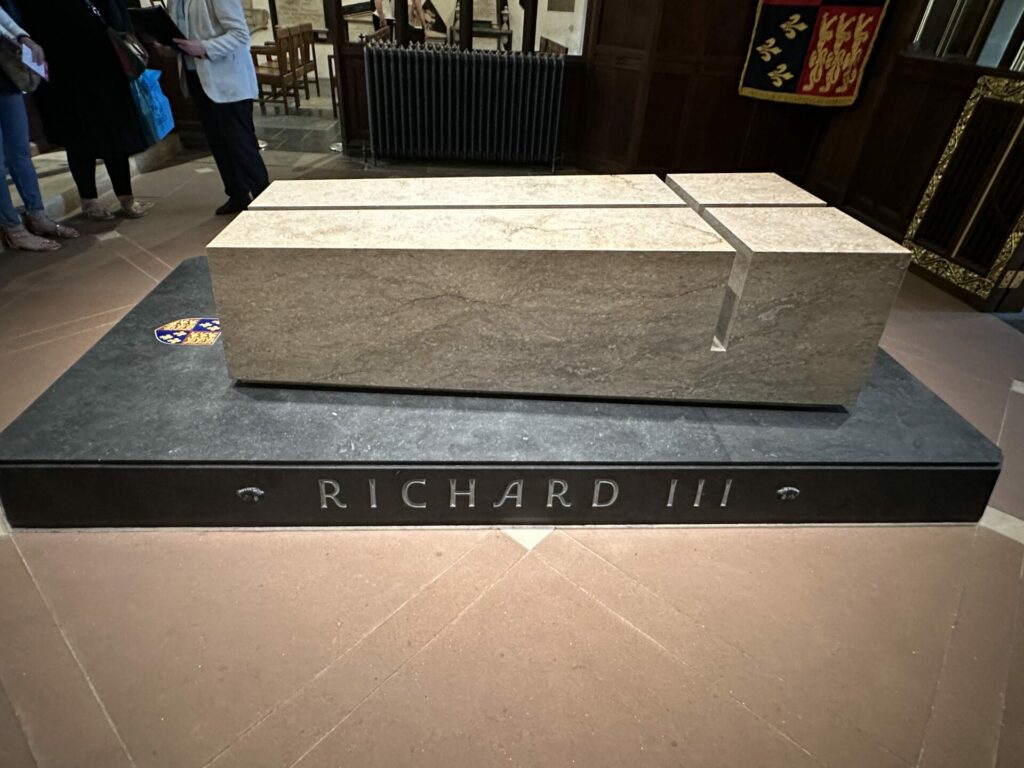
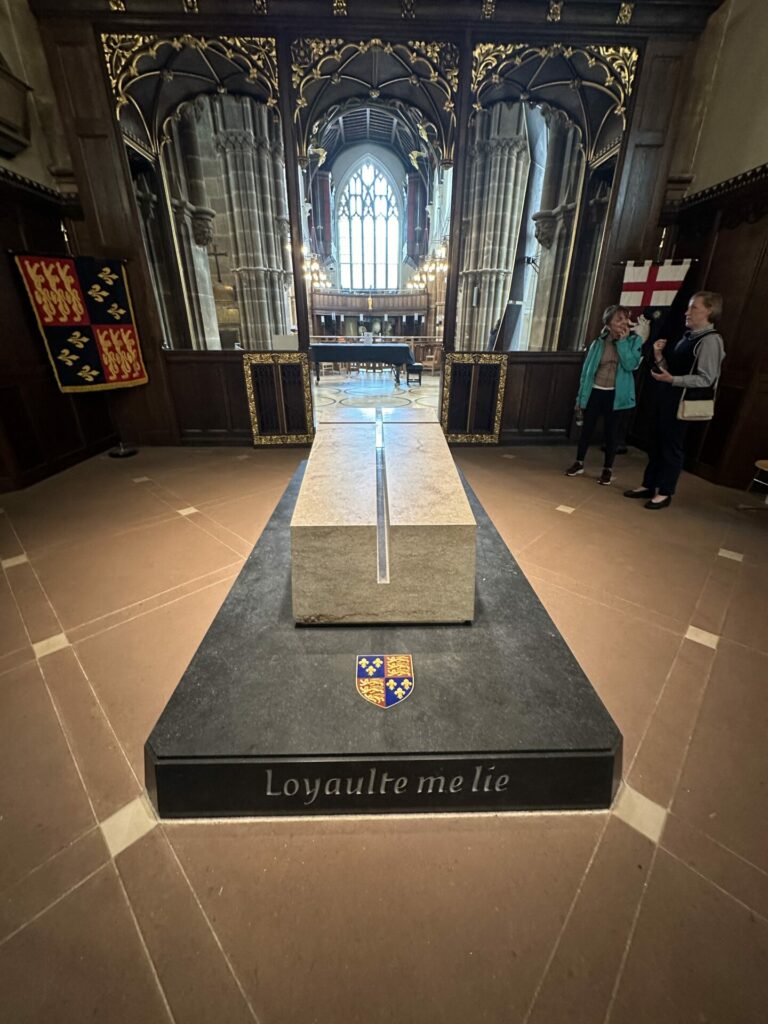
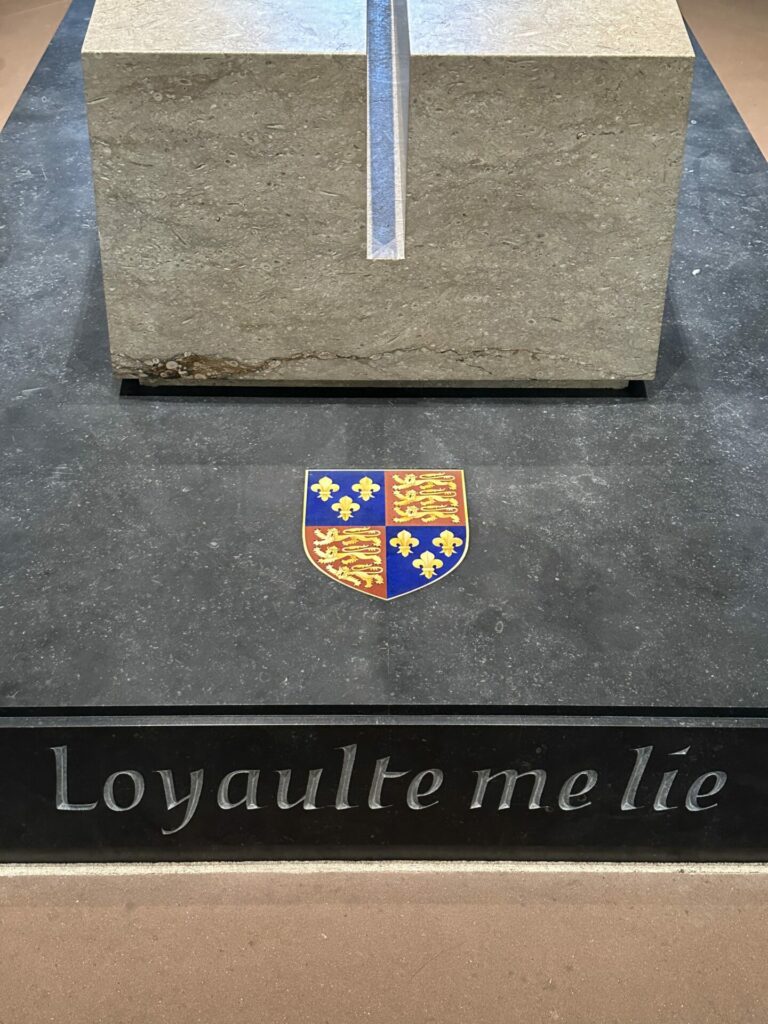
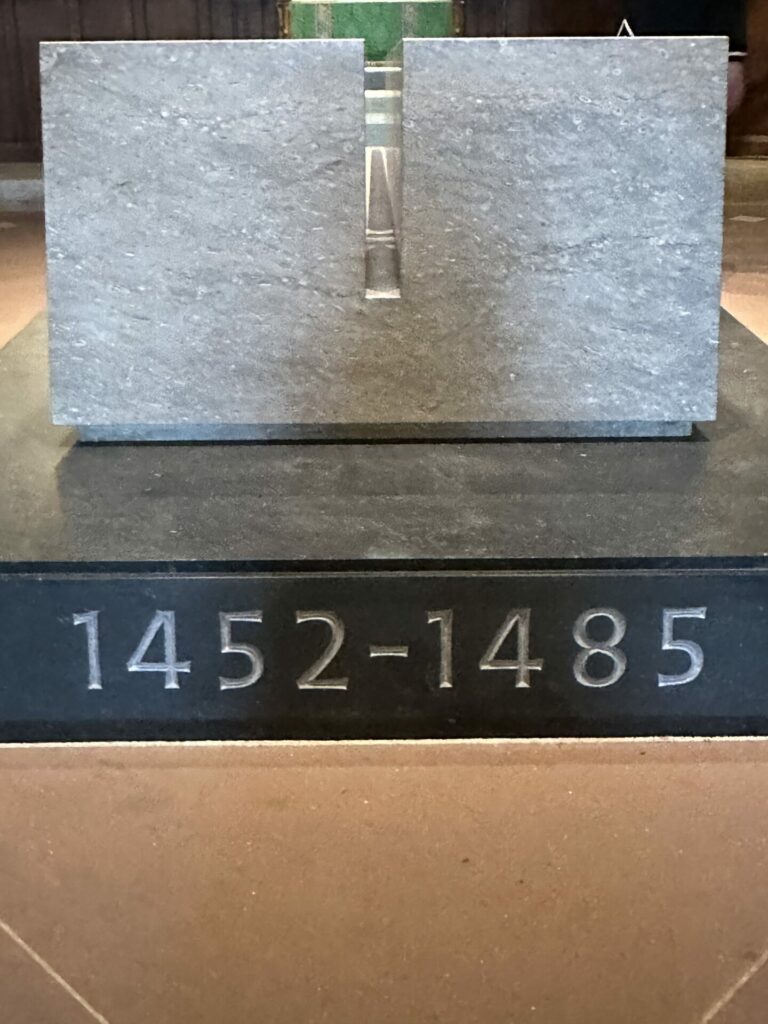
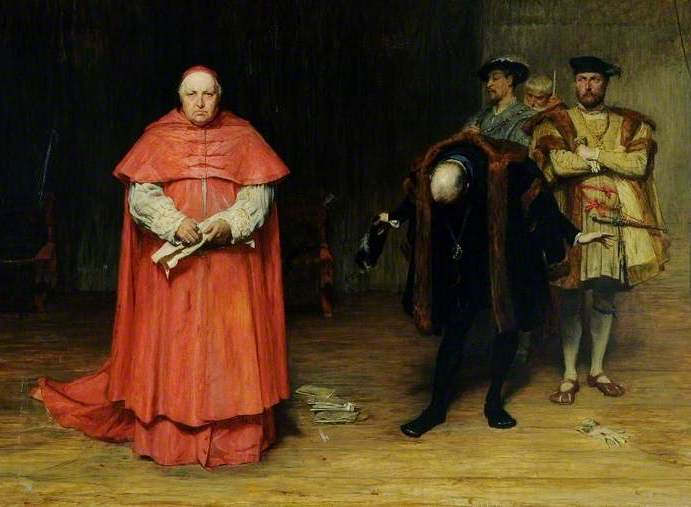
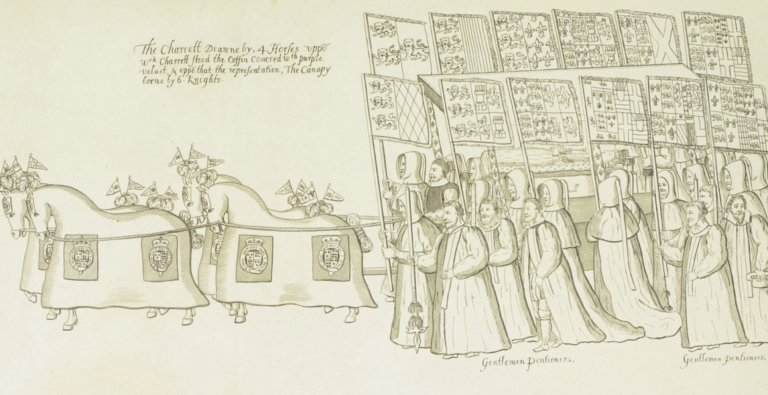
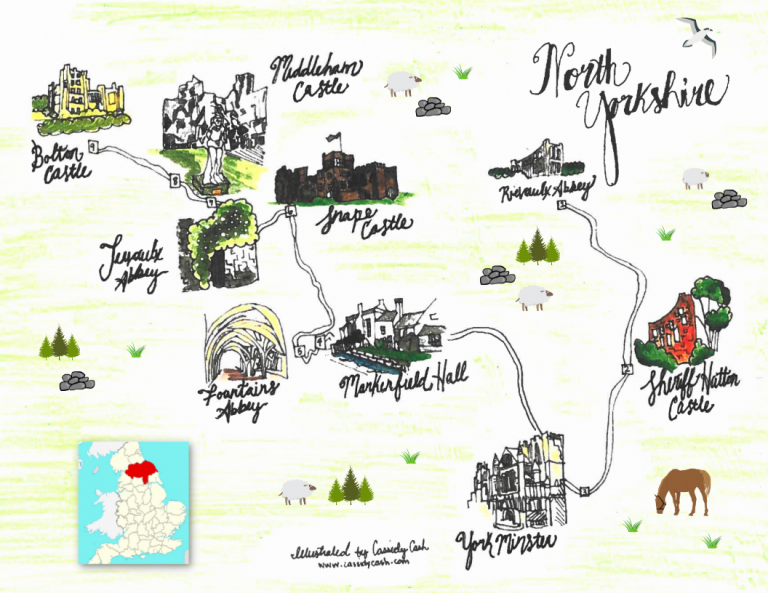
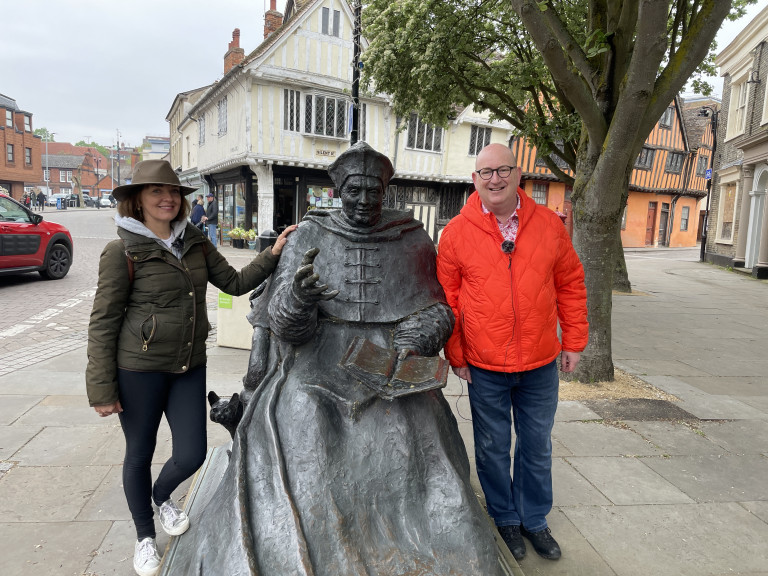
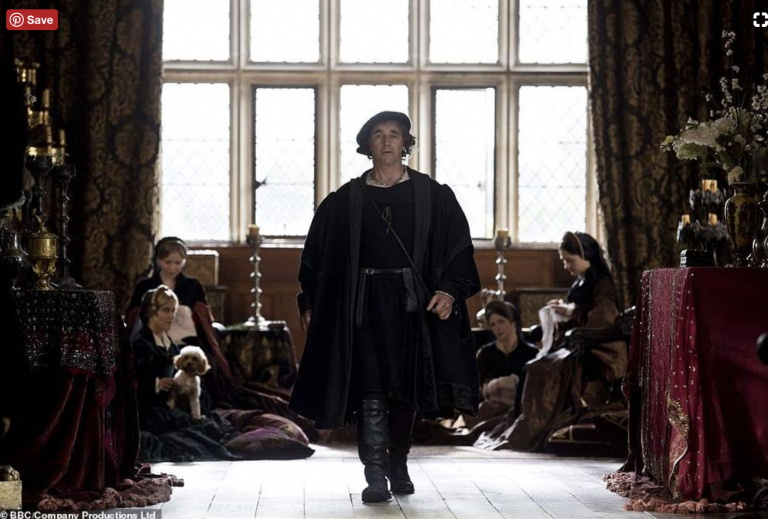
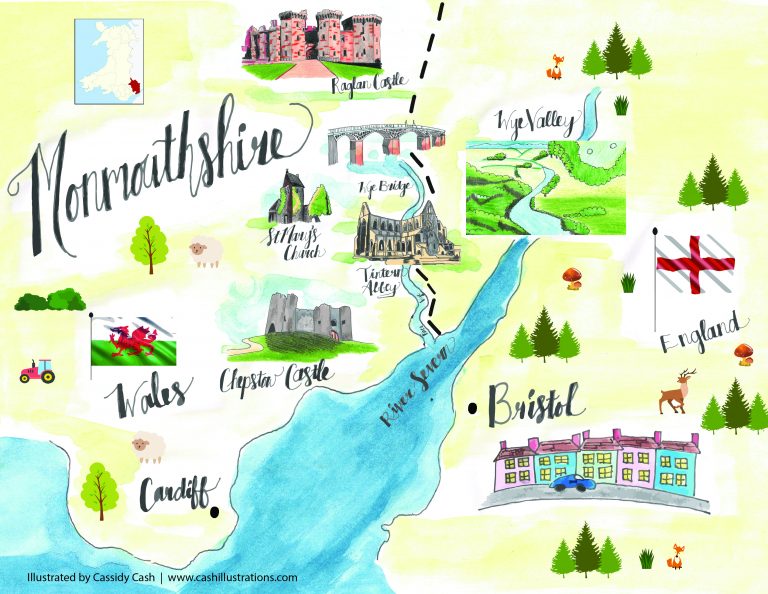
Wow, Sarah! I’ve always ha a soft spot for Richard the third. Great podcast. A location long on my bucket list. Next trip I am heading for Leicester! Thanks for the links and all the great Intel. Cheers.
Thanks Kim! I am so thrilled people are loving this mini-series. I’ve wanted to do this for ages and I hope we nailed it. Hurrah for King Richard!
Thank you for an excellent virtual walking tour. Although I have visited some of the sites in Leicester since Richard III’s reburial you covered others that I only knew of but had not been able to visit. I have also visited the Battlefield Centre at Ambion Hill but that was before the site of the battle was more accurately identified.
I learned new details of the events of August 1485 and the videos set me thinking about that and about medieval Leicester in general.
The series did make me want to follow in your footsteps and those of Richard III and Henry VII.
I was interested also by your account of your “conversation” with Richard III in Sutton Cheney church. With appropriate caution I would not discount such an experience. Maybe I might try “calling” upon other figures from the period when near their graves!
hi John! Lovely to hear from you! I hope you are well. I am delighted you enjoyed the tour. This was one of my favourite to record and produce…and noted re: my proclivity for ‘conversations’ with the dead!